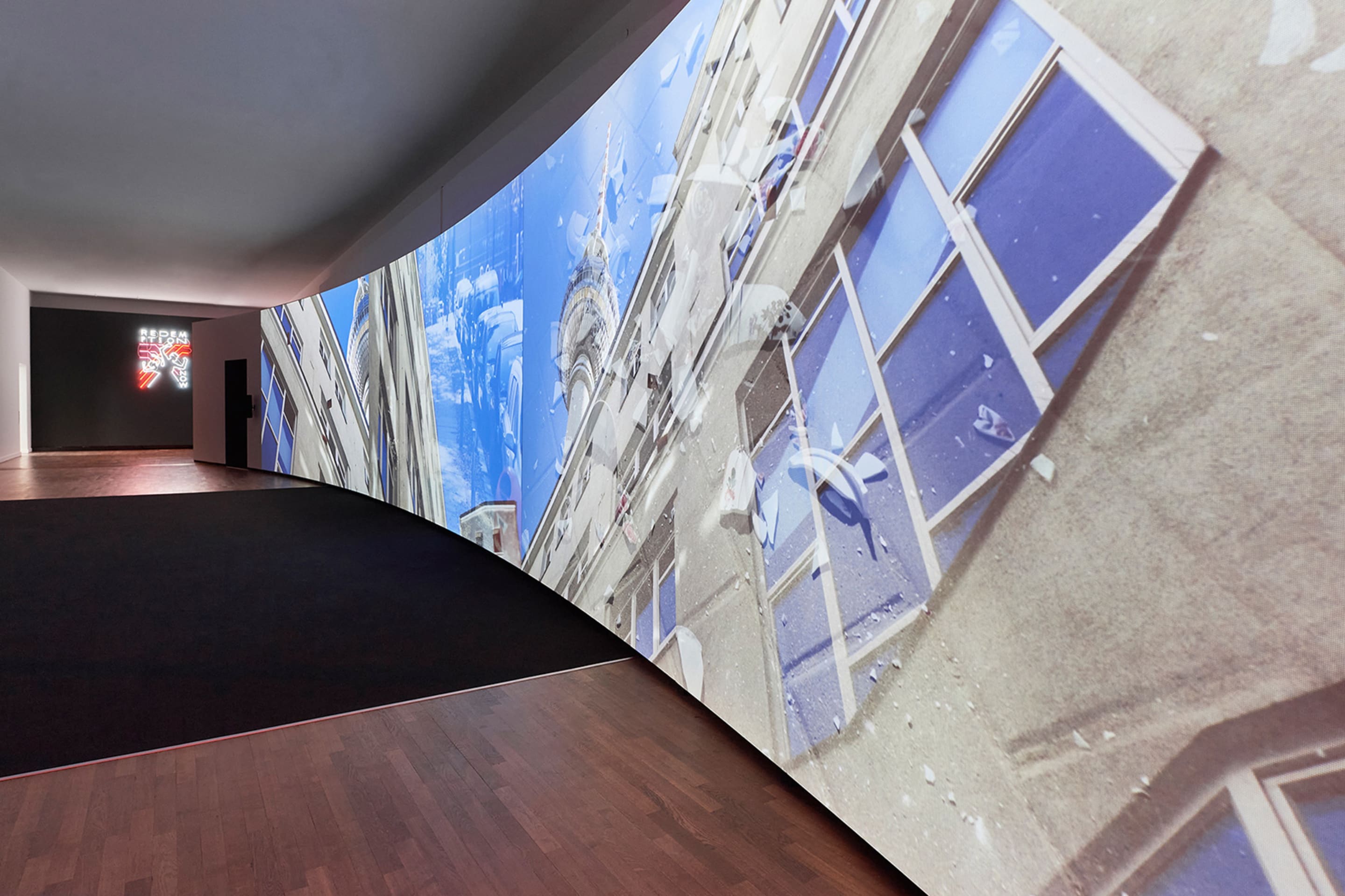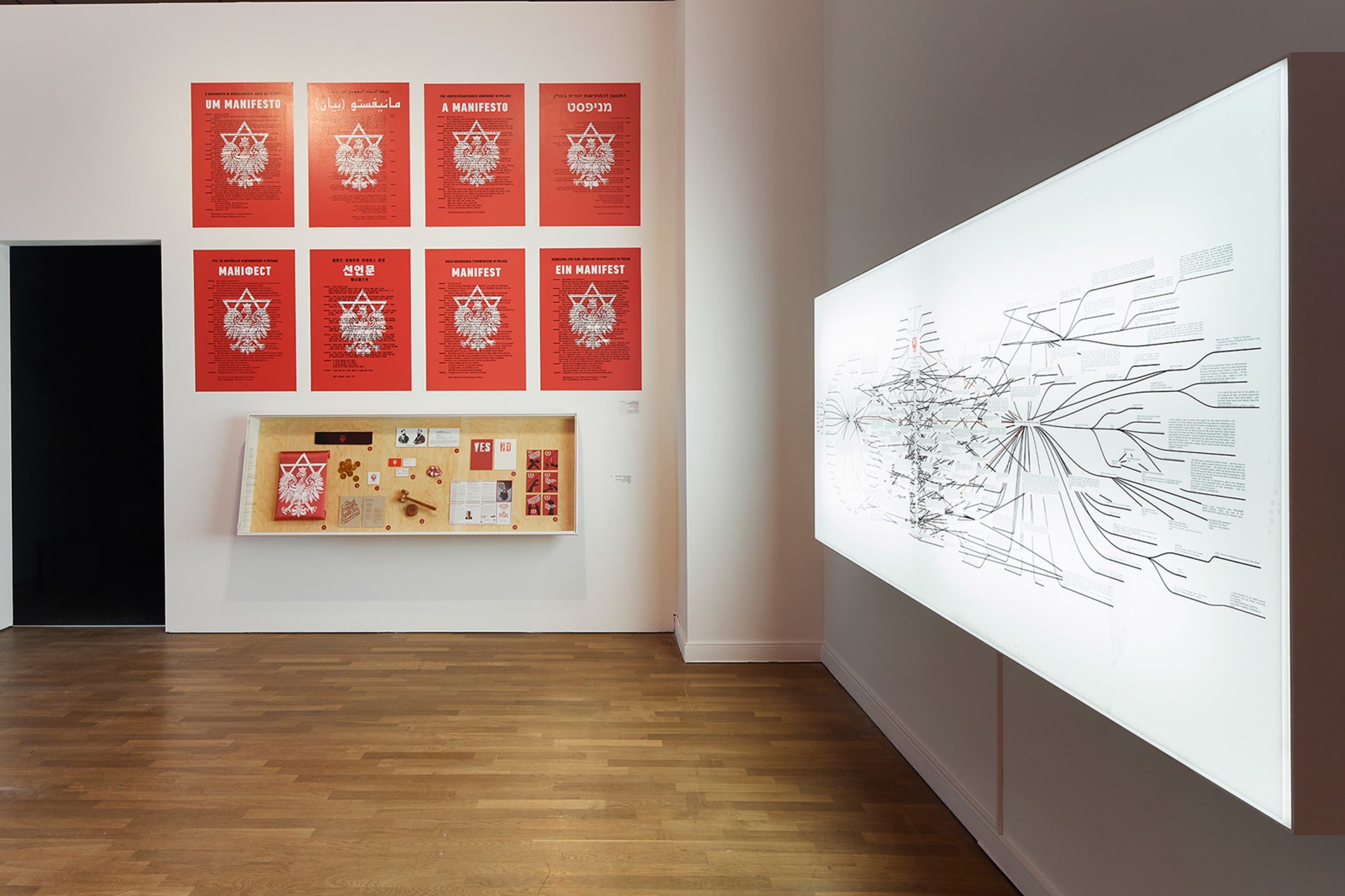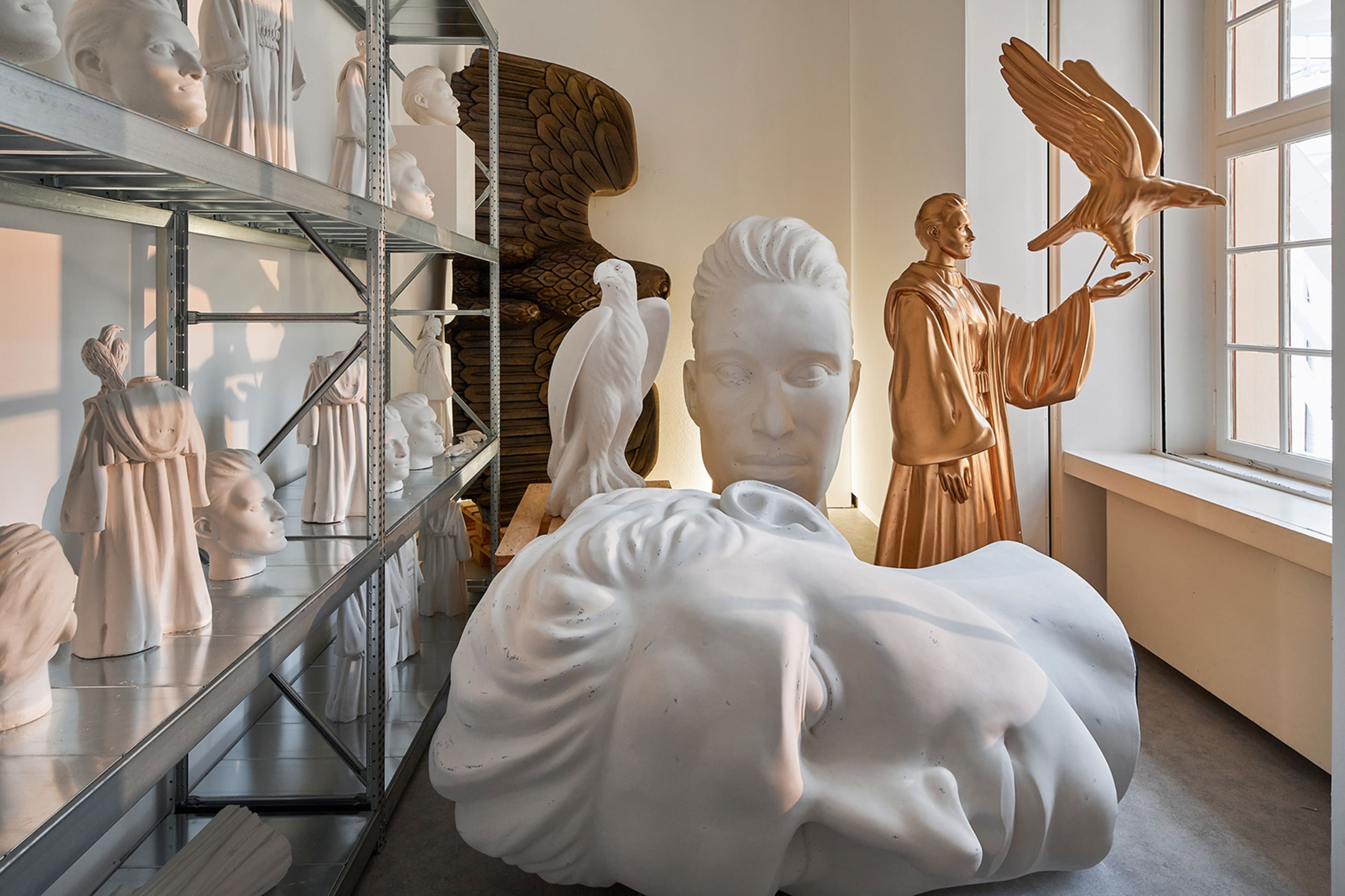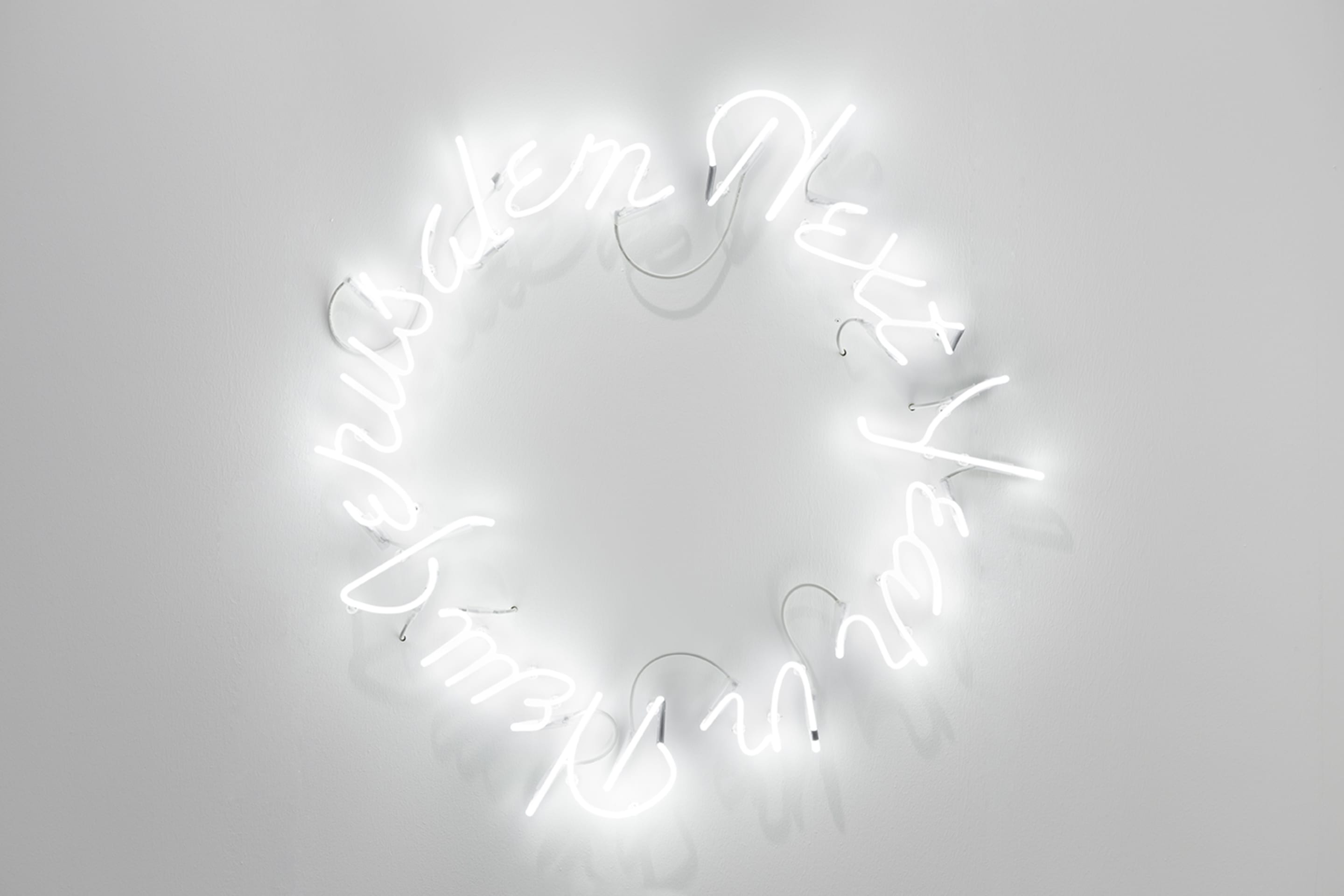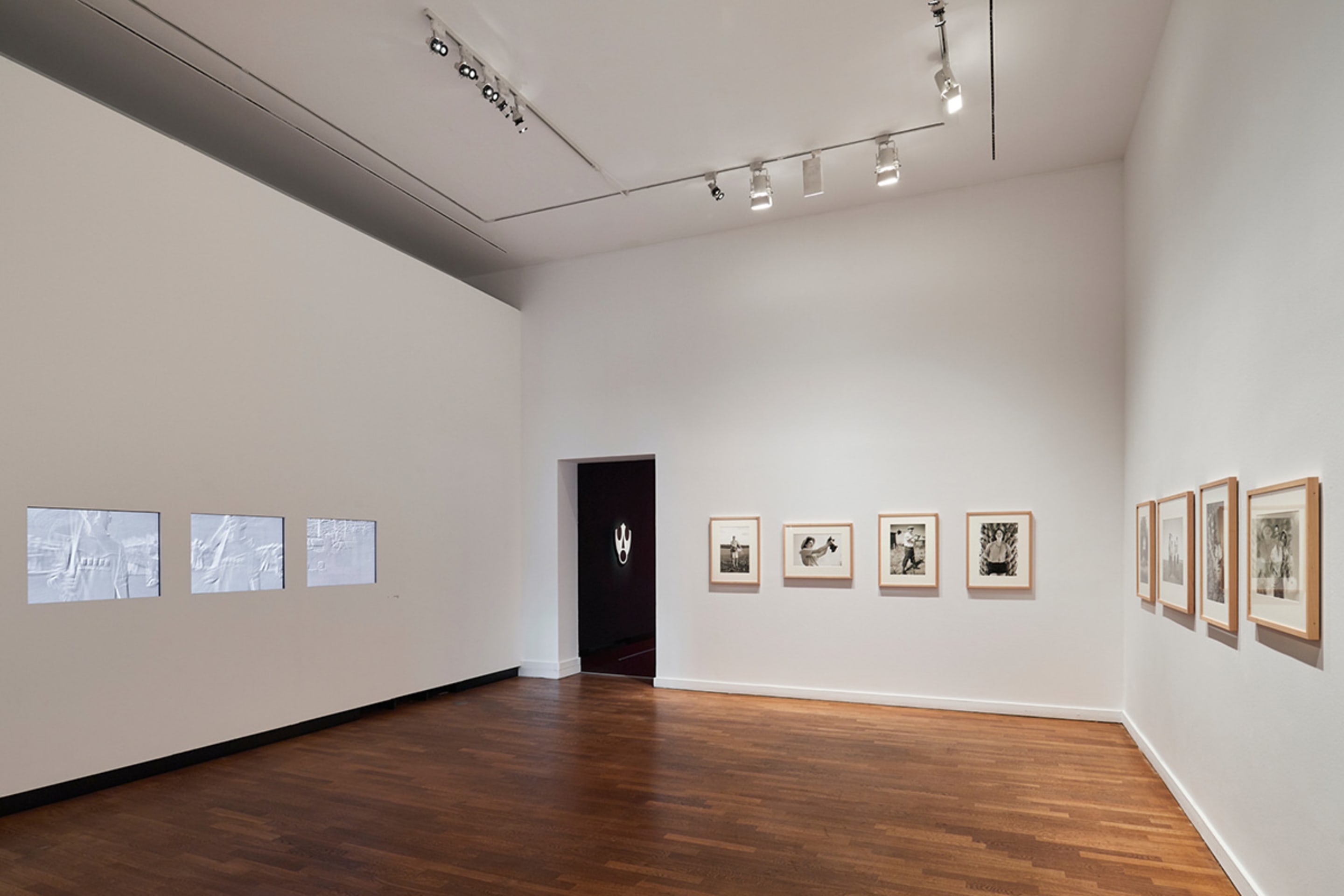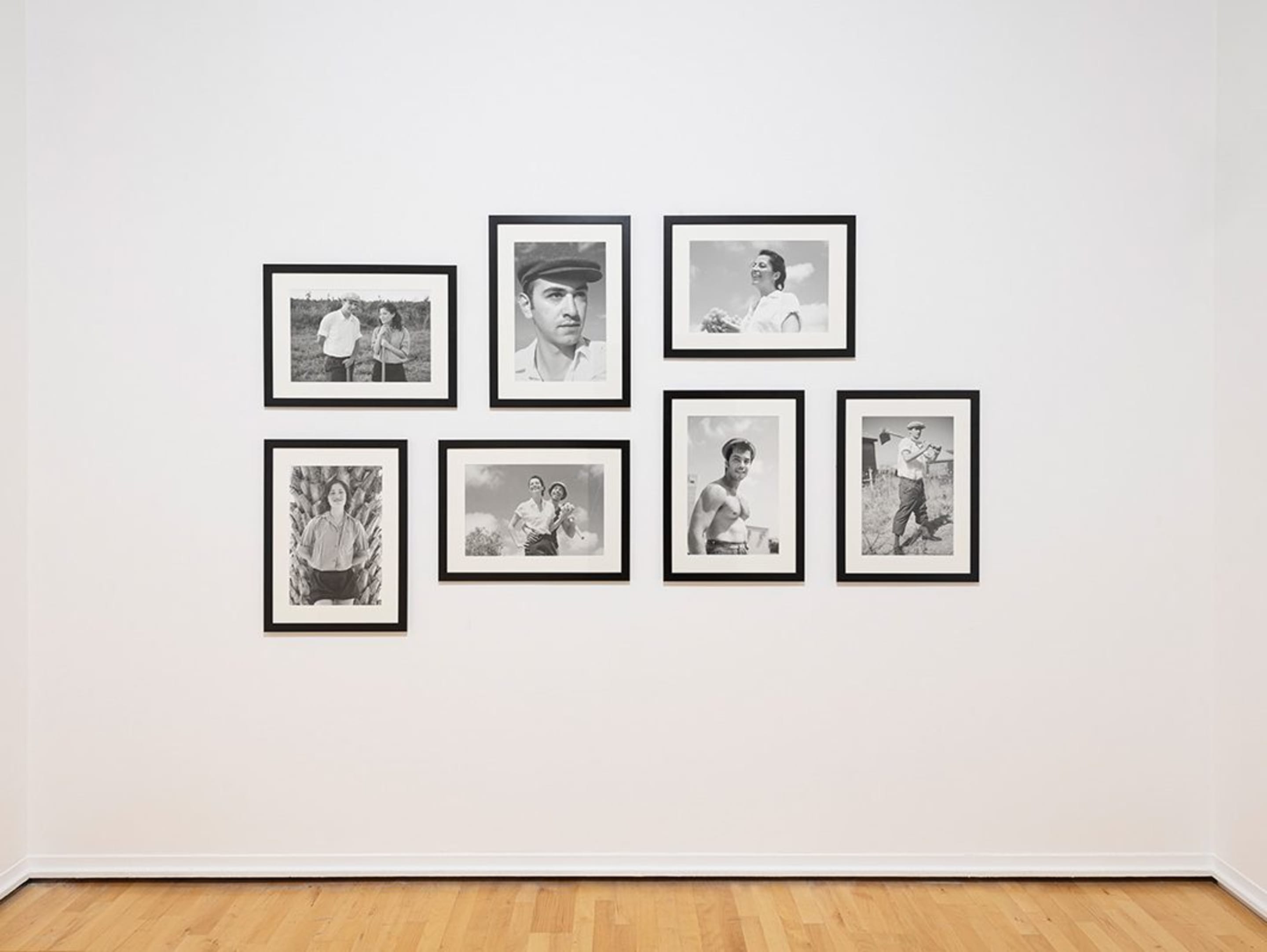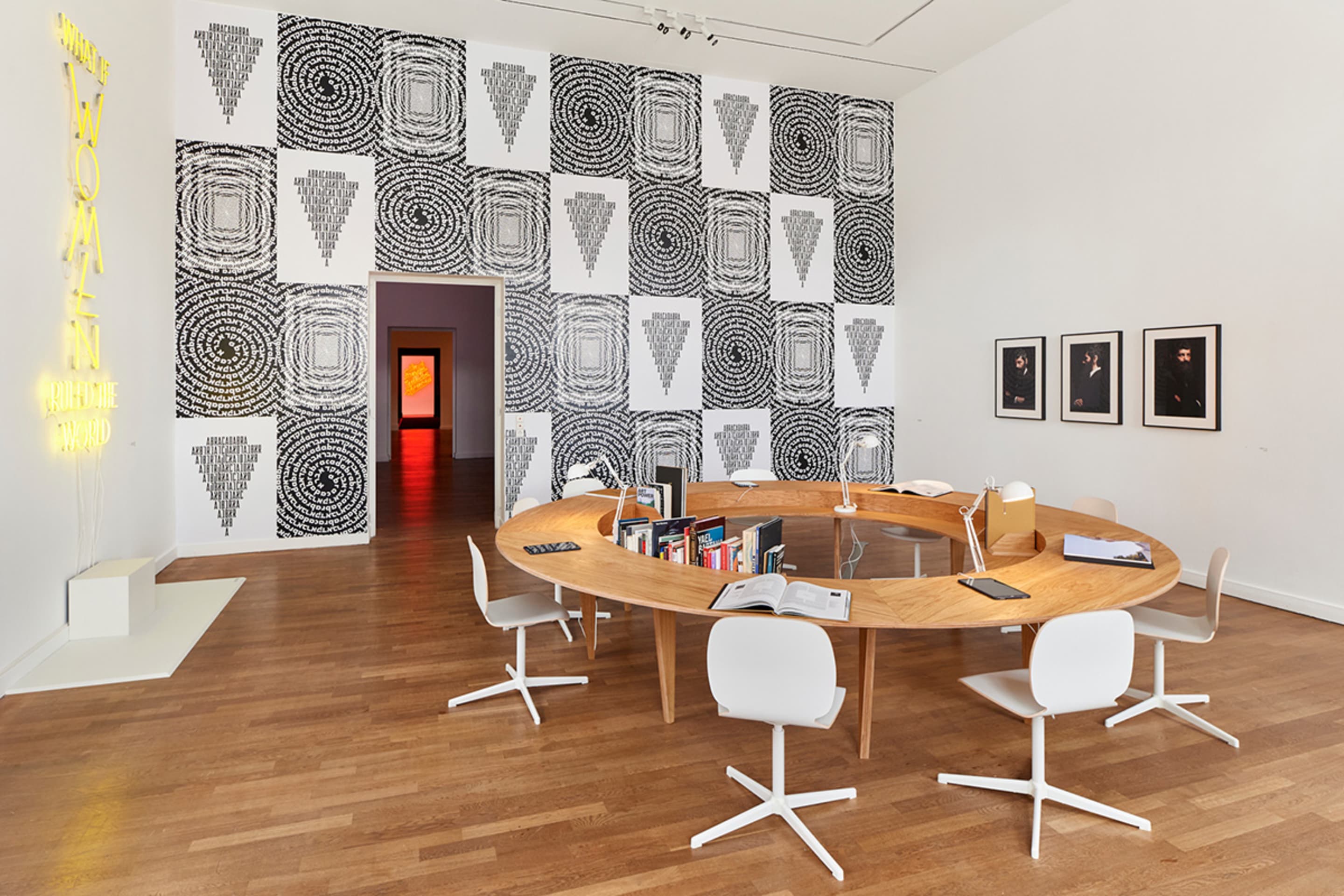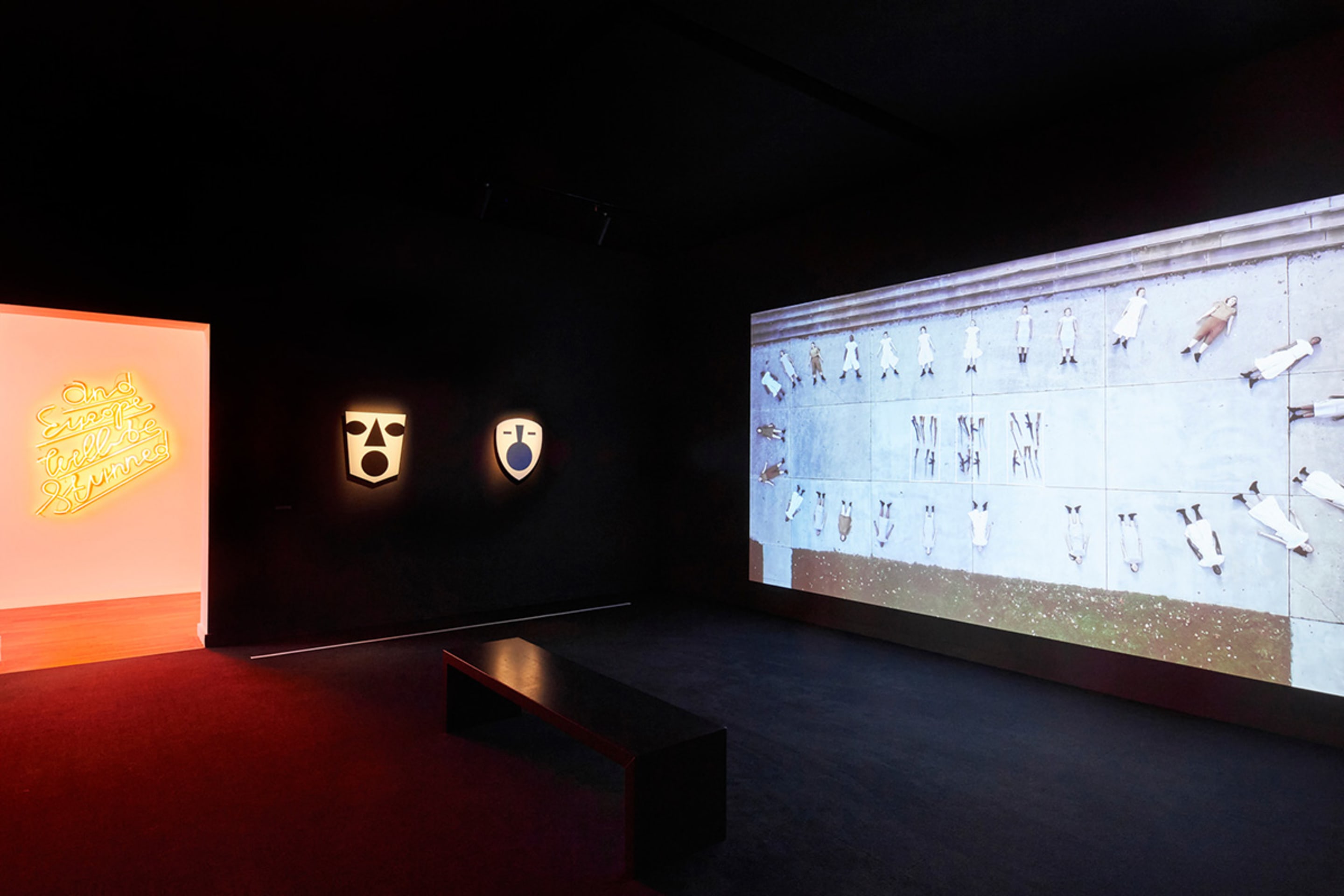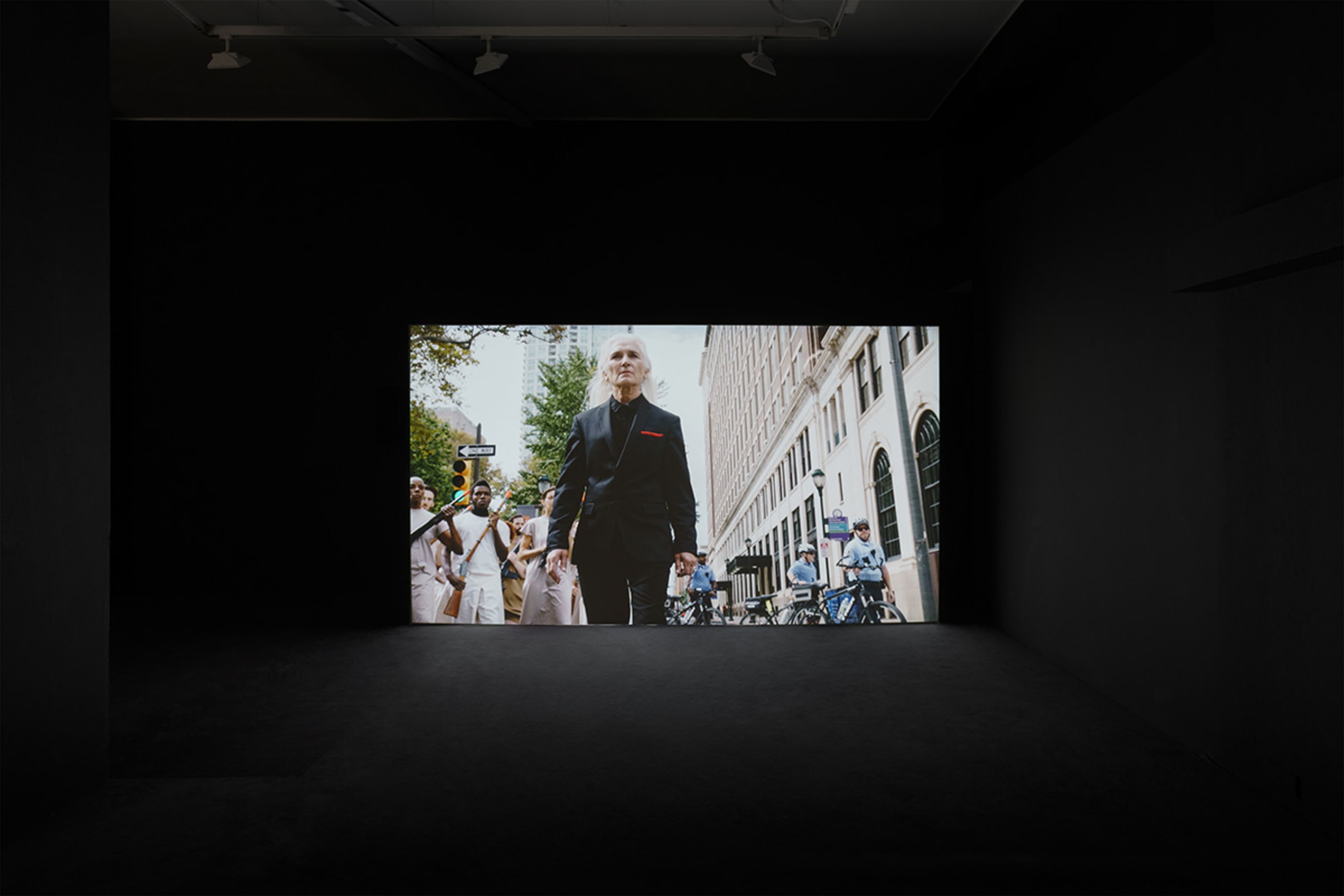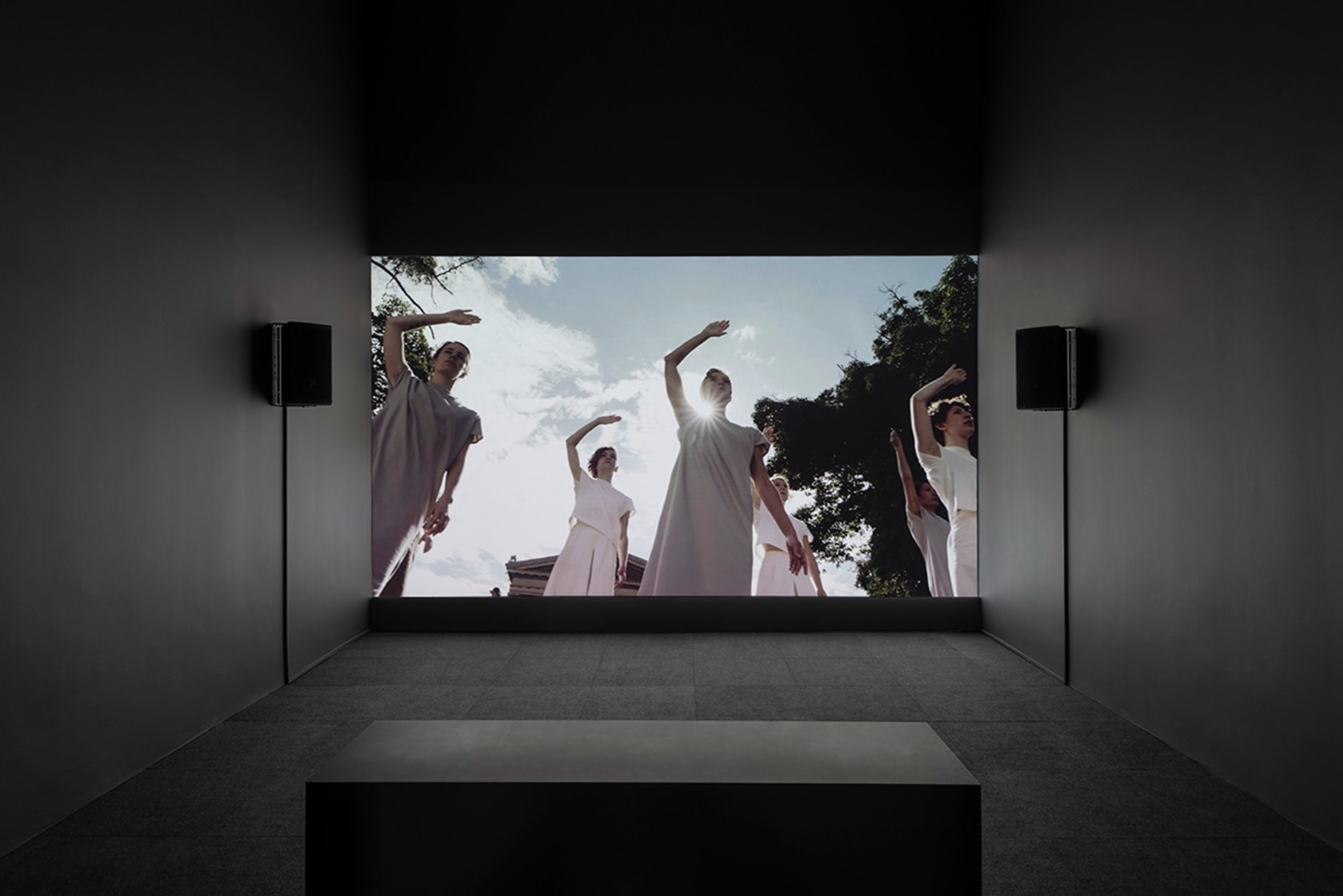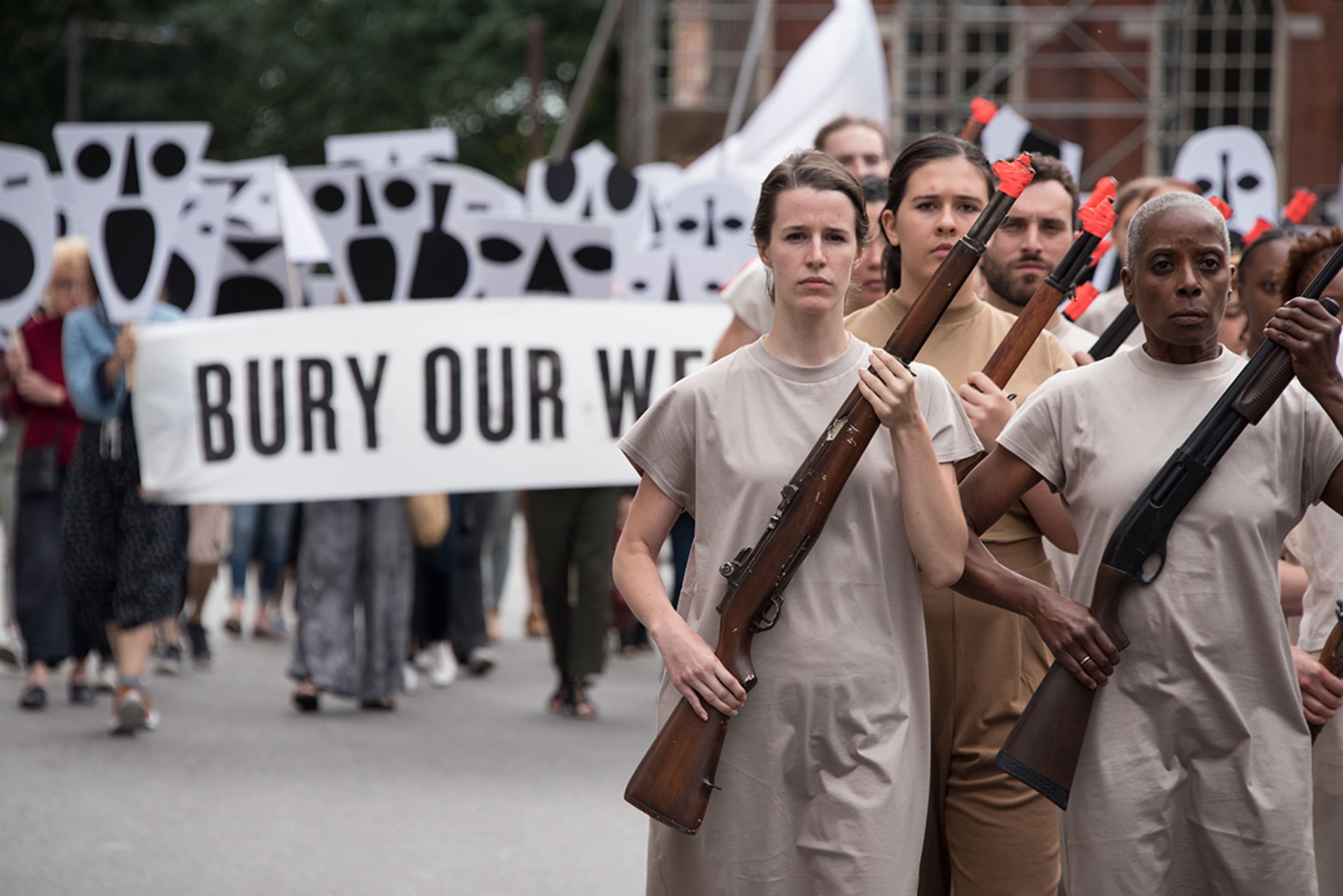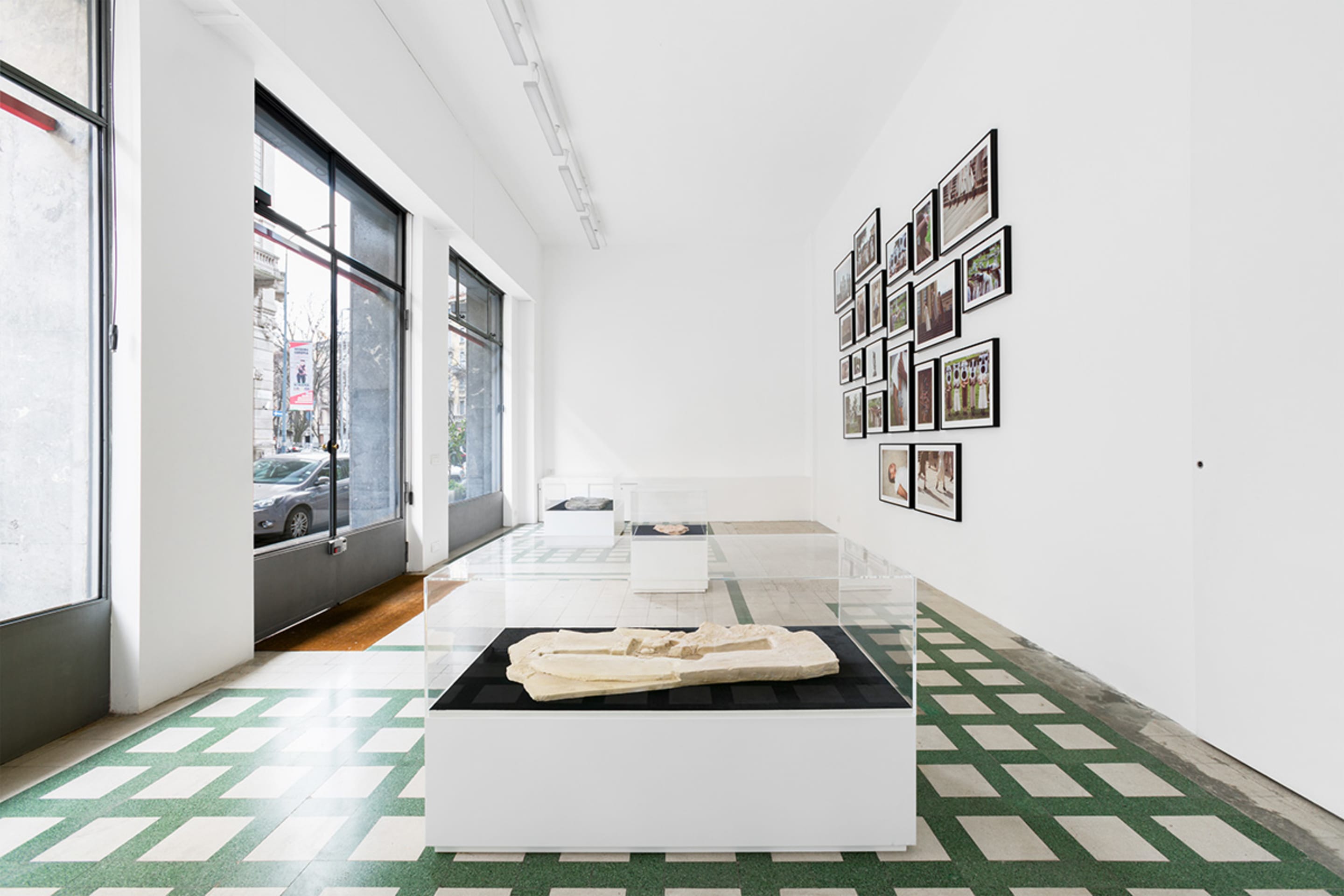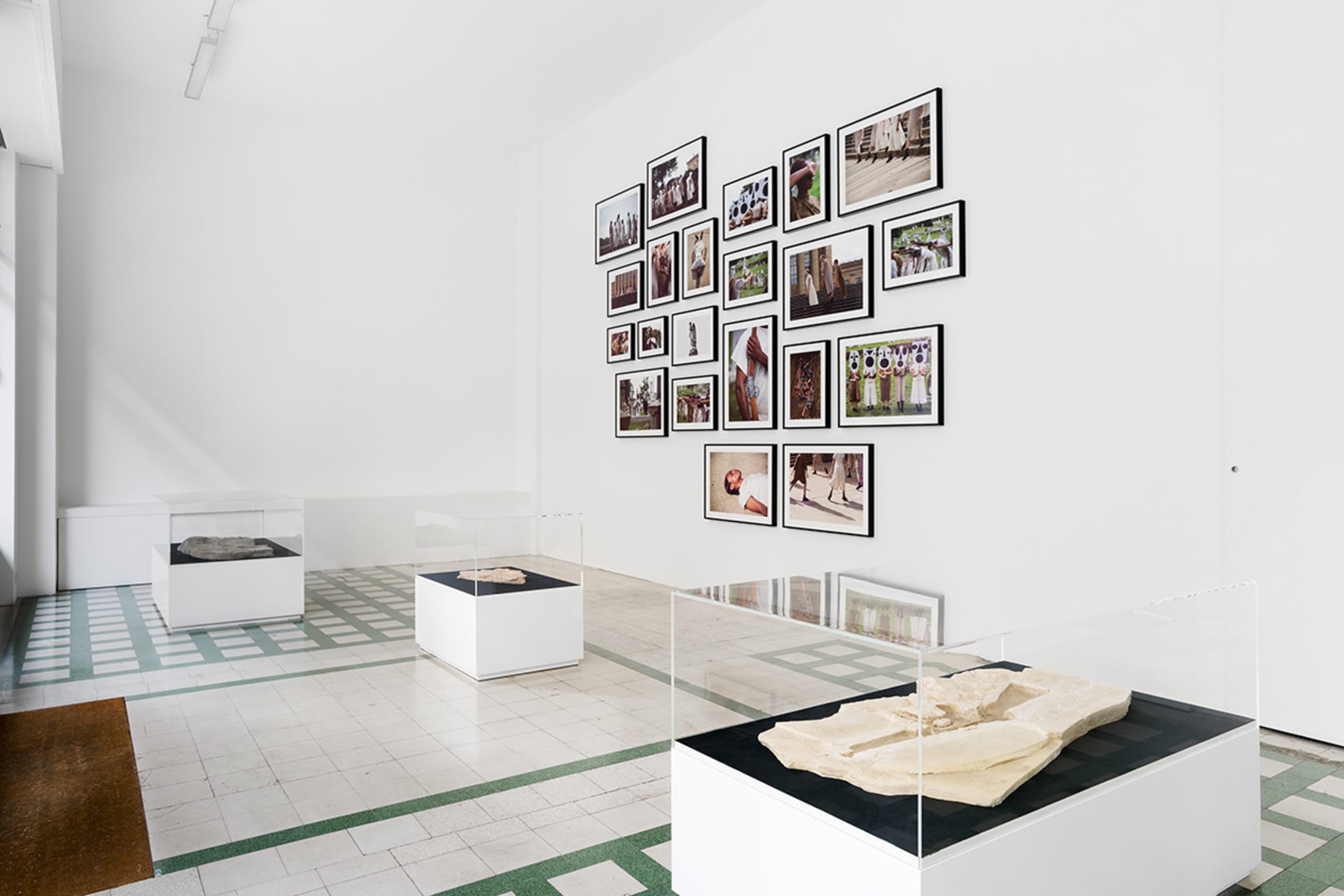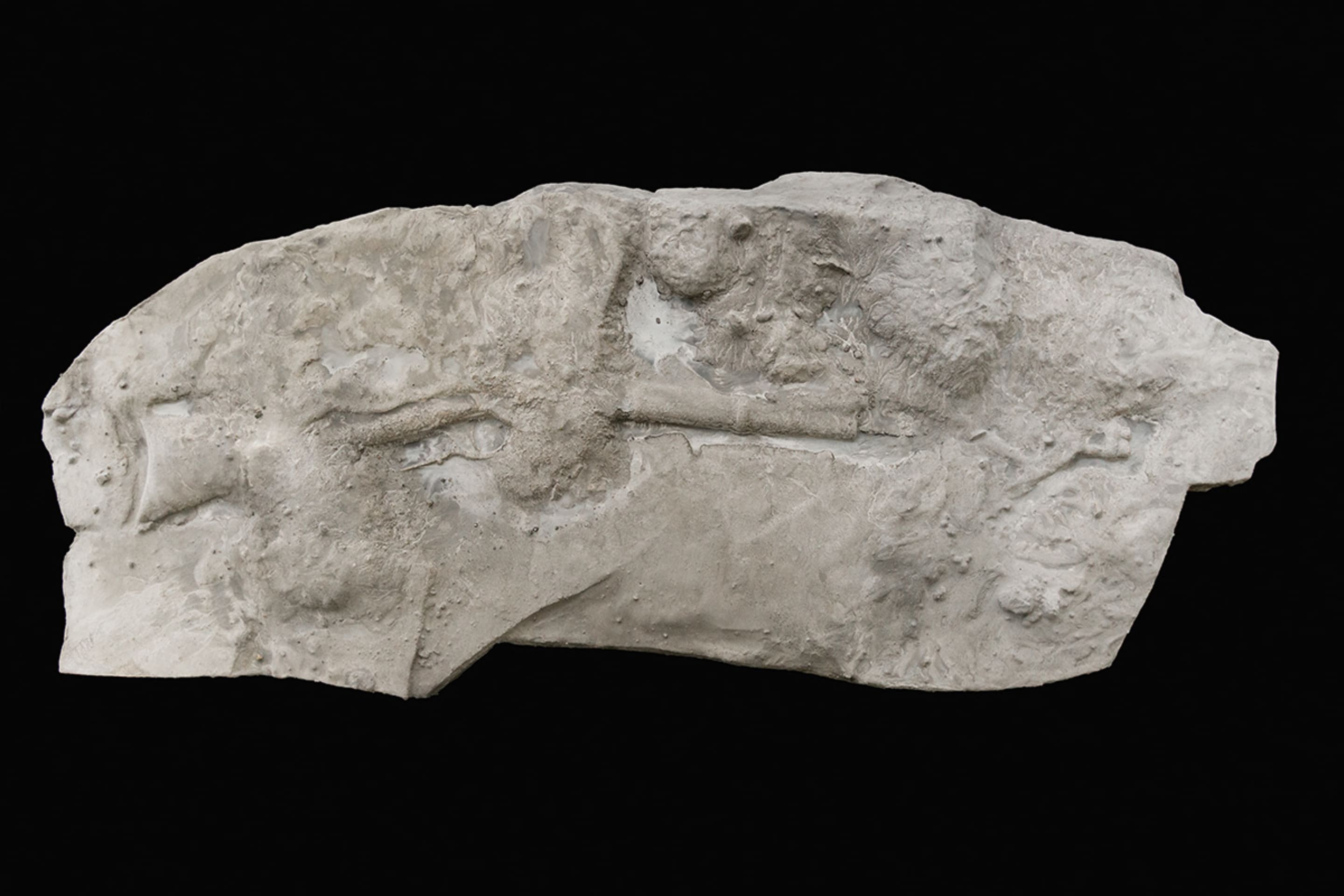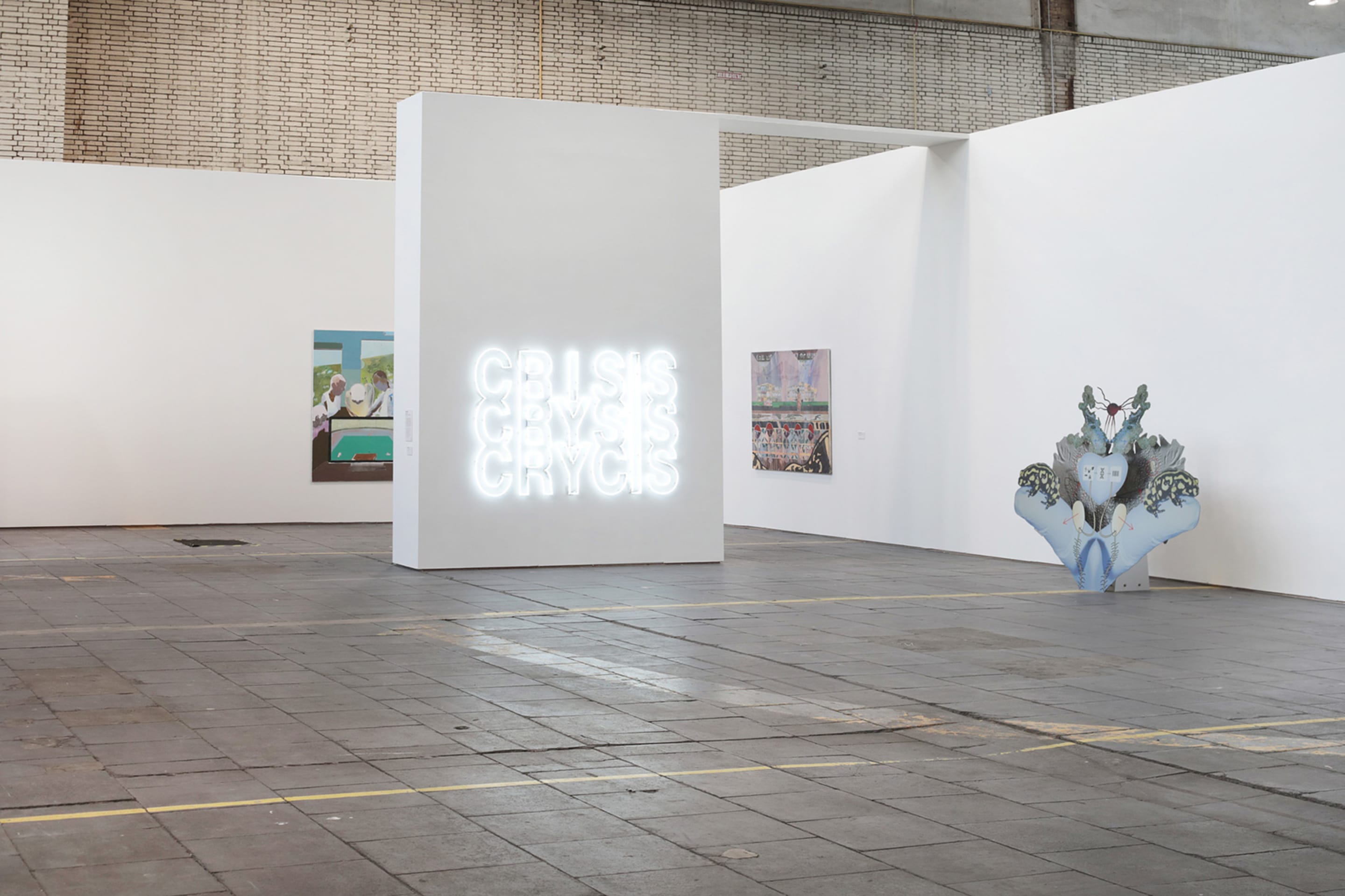Focus On: Yael Bartana
We are delighted to present Focus On: Yael Bartana, the third instalment in this series of in-depth viewing rooms devoted to artists in the gallery program, on the occasion of Redemption Now, Bartana’s solo exhibition at the Jewish Museum Berlin, on view from June 4 through November 21, 2021. Yael Bartana’s films, installations, sculptures, and photographs explore the imagery of identity and the politics of memory. Her starting point is the national consciousness propagated by her native country, Israel. Central to the work are meanings implied by terms like ‘homeland’, ‘return’ and ‘belonging’. Bartana investigates these through ceremonies, public rituals, and social diversions that are intended to reaffirm the grand historical narratives that contribute to building up national and other collective identities.
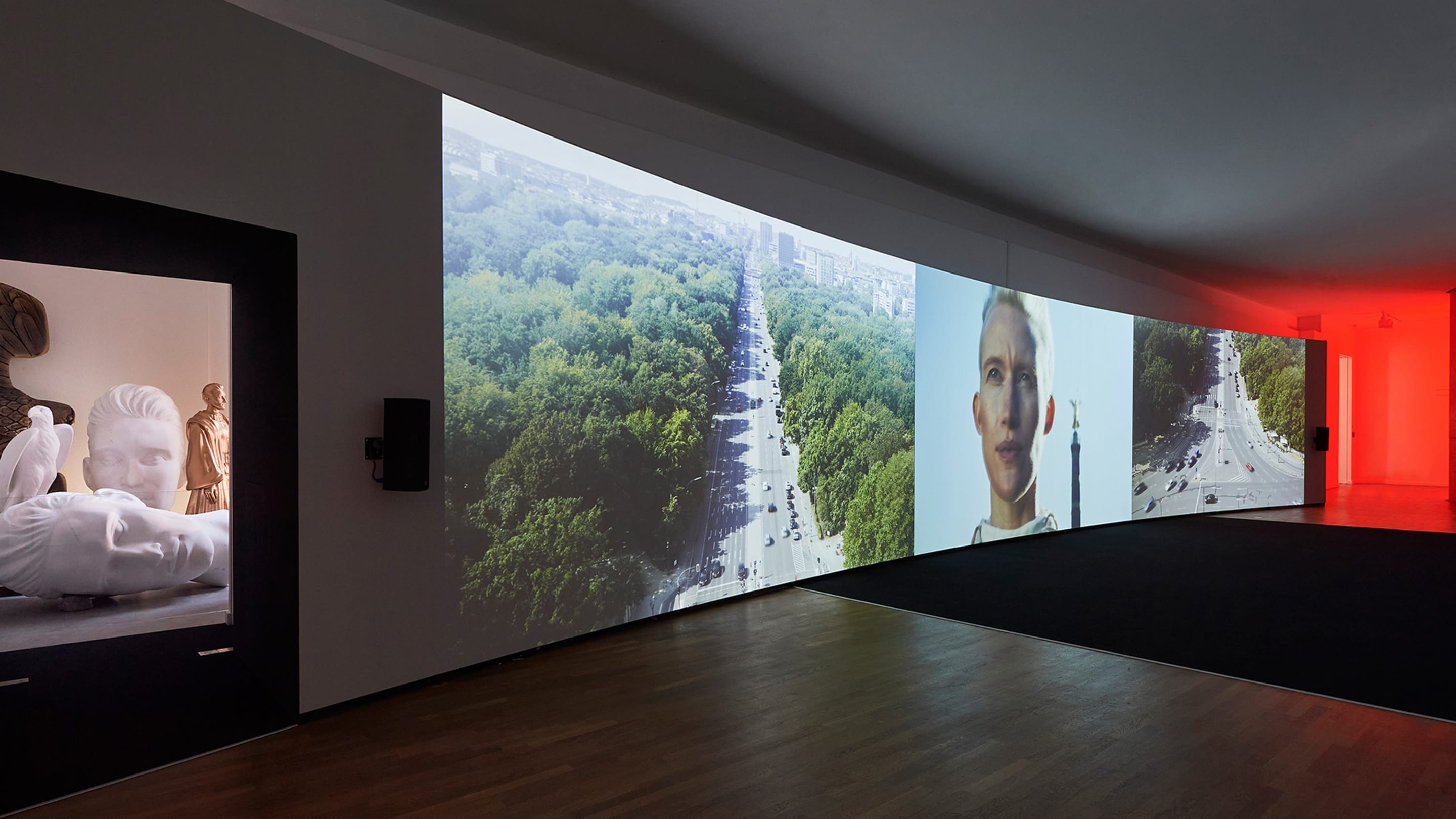
Installation view at Jewish Museum Berlin, 2021
Investigating the power of imagination and art’s redemptive potential, Bartana’s show at the Jewish Museum Berlin brings together more than fifty early and more recent works, including video installations, photographs, and neon works. Curated by Shelley Harten and Gregor H. Lersch, the exhibition follows an eschatological topos—the recurring idea that a leader may bring salvation—and its deconstruction.
At the core of the show is the commissioned video work Malka Germania (Hebrew for “Queen Germania”), which Bartana conceived for the Jewish Museum and produced at historically charged locations across Berlin. An androgynous savior figure comes to the German capital. Her journey floods the city with scenes from an imagined collective unconscious; past and future merge in an alternative present. The installation’s theme of collective redemption addresses traumata, hopes of salvation, and the desire for change.
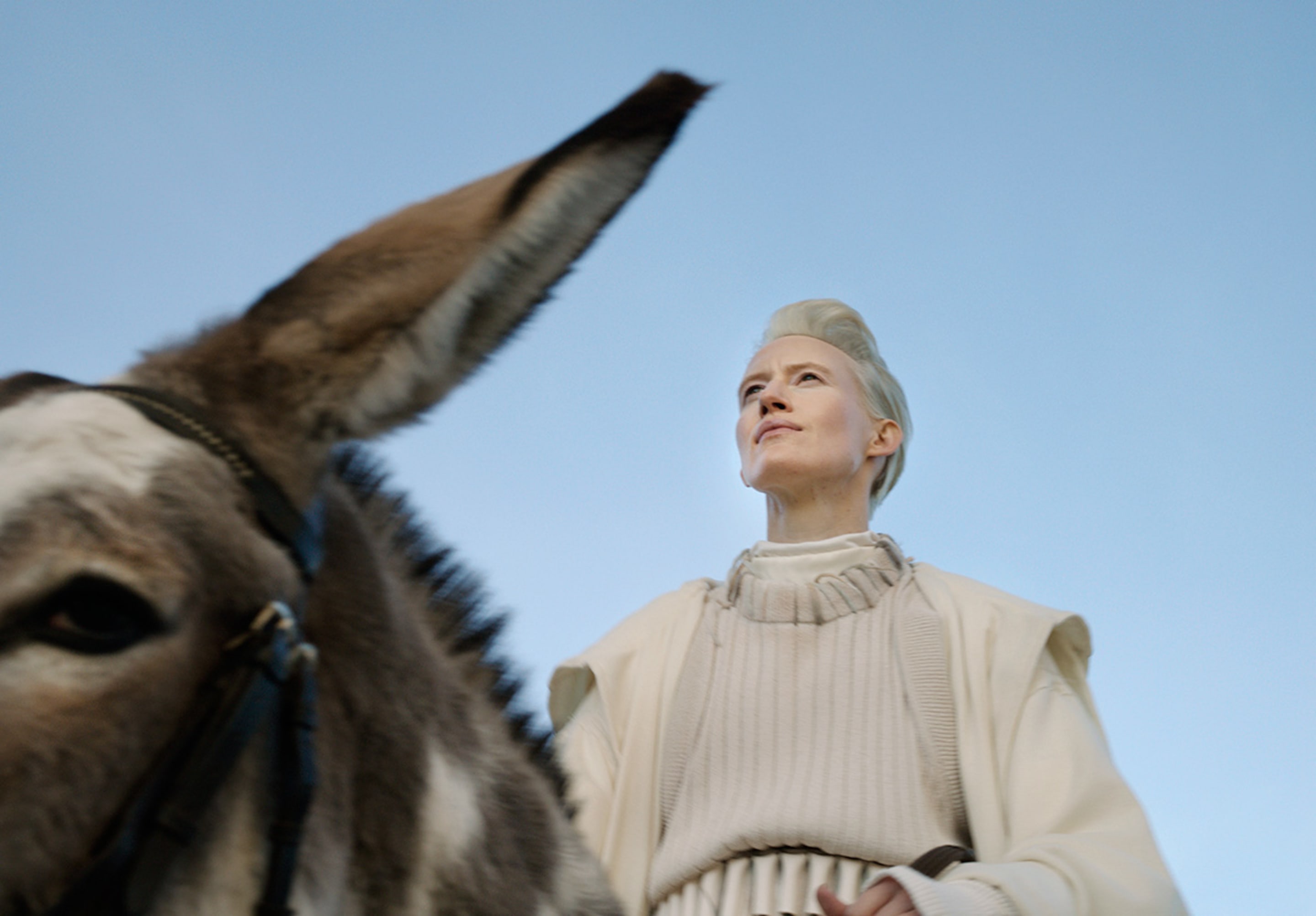
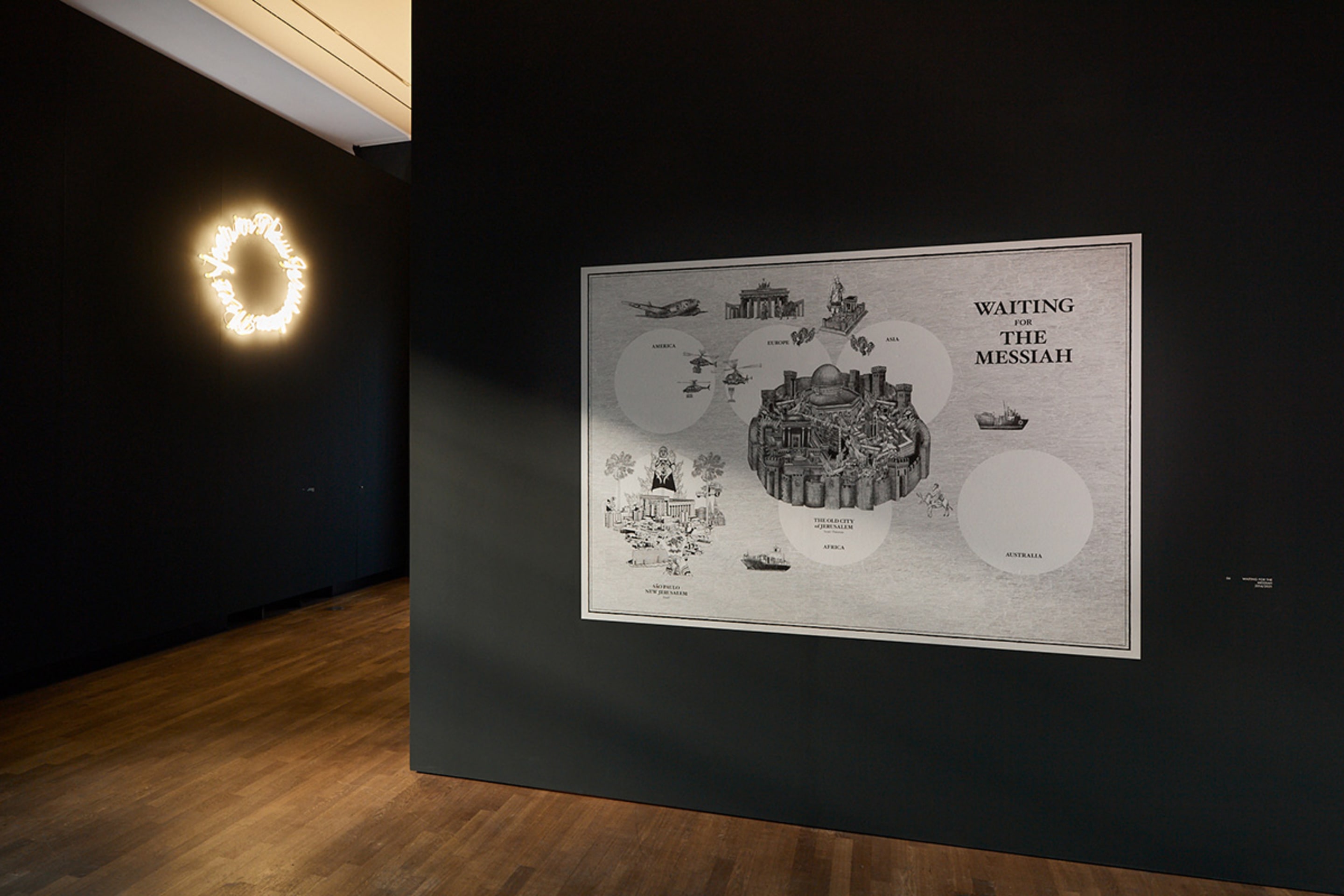
Photo: Yves Sucksdorff
The phrase “Next Year in Jerusalem” is recited at the end of the Passover Seder and on some other occasions. It expresses the aspiration for redemption, as Jews expect to return to Jerusalem upon the arrival of the Messiah. The neon artwork’s circular shape alludes to the sentence’s incessant repetition and the unfulfilled promise of salvation. By adding the word ‘new,’ Bartana leaves room for interpretation and opens the door to utopian fantasies. “New Jerusalem” could be another, freshly imagined place that does not inherently bear the burden of conflict.
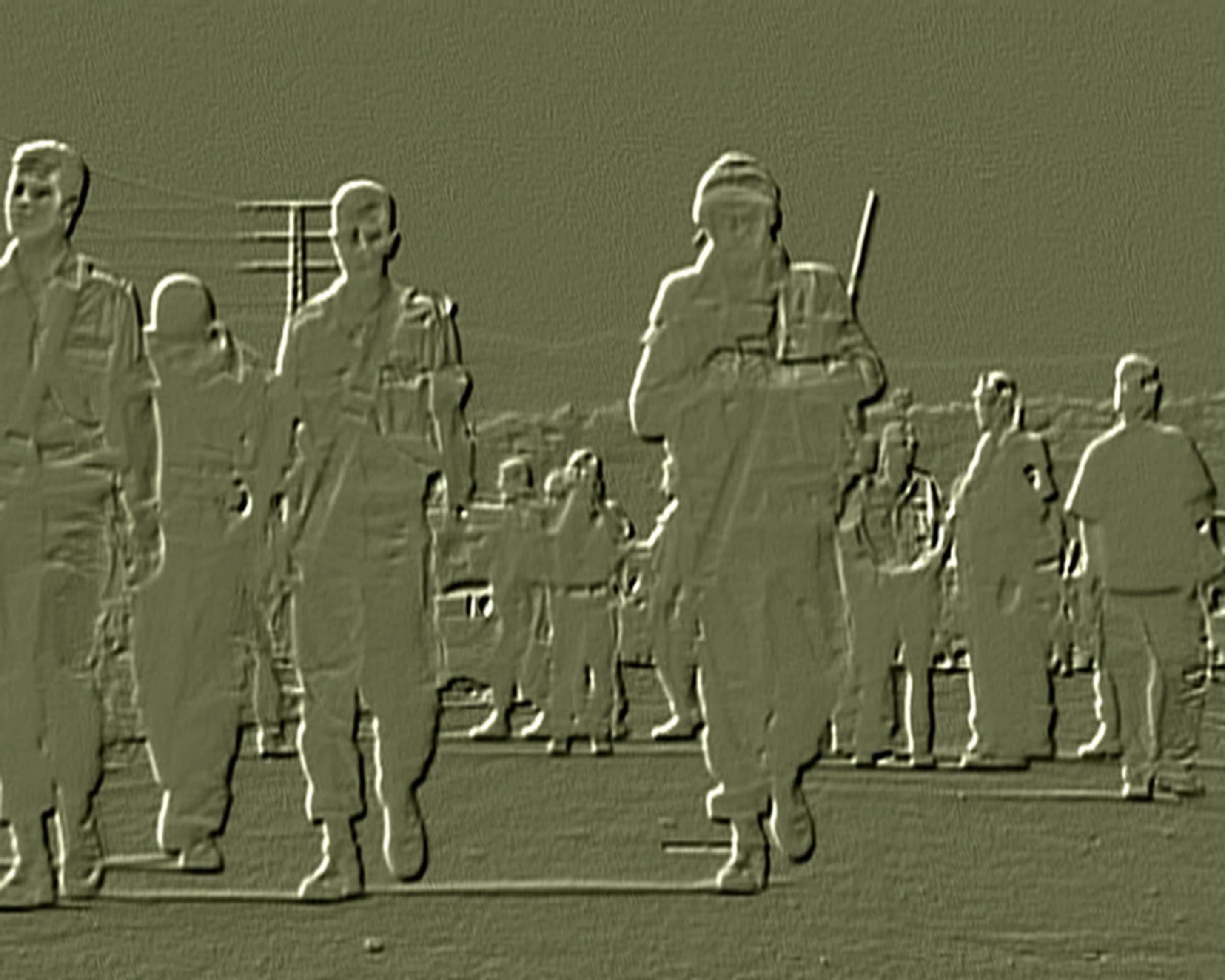
One channel video and sound installation – color/sound
5' 40"
In the video installation Low Relief II, Bartana documents peace demonstrations by Israelis and Palestinians who have come together to demand an end to the conflict. In slowing down the protesters’ movements and applying an embossing effect, Bartana makes the installation seem like an animated version of an ancient relief. She thus associates modern scenes with early forms of documentation. This act of ‘carving’ reflects the role of archeology in nation-building and at the same time the sense of fatigue perceived by many in the peace movement.
For the series of black and white photographs The Missing Negatives of the Sonnenfeld Collection (2008), Bartana selected photographs from the extensive archive of legendary photo journalists Leni and Herbert Sonnenfeld, who documented Palestine / Eretz Israel in the years 1933–1948. Adopting that same heroic style, Bartana re-staged the original photographs with the help of young Arabs and Arab Jews, who are currently residing in Israel. She portrays the models as beautiful, joyous, hopeful farmers, workers, and soldiers. The series creates a utopian moment that challenges the ethos of the Zionist movement.
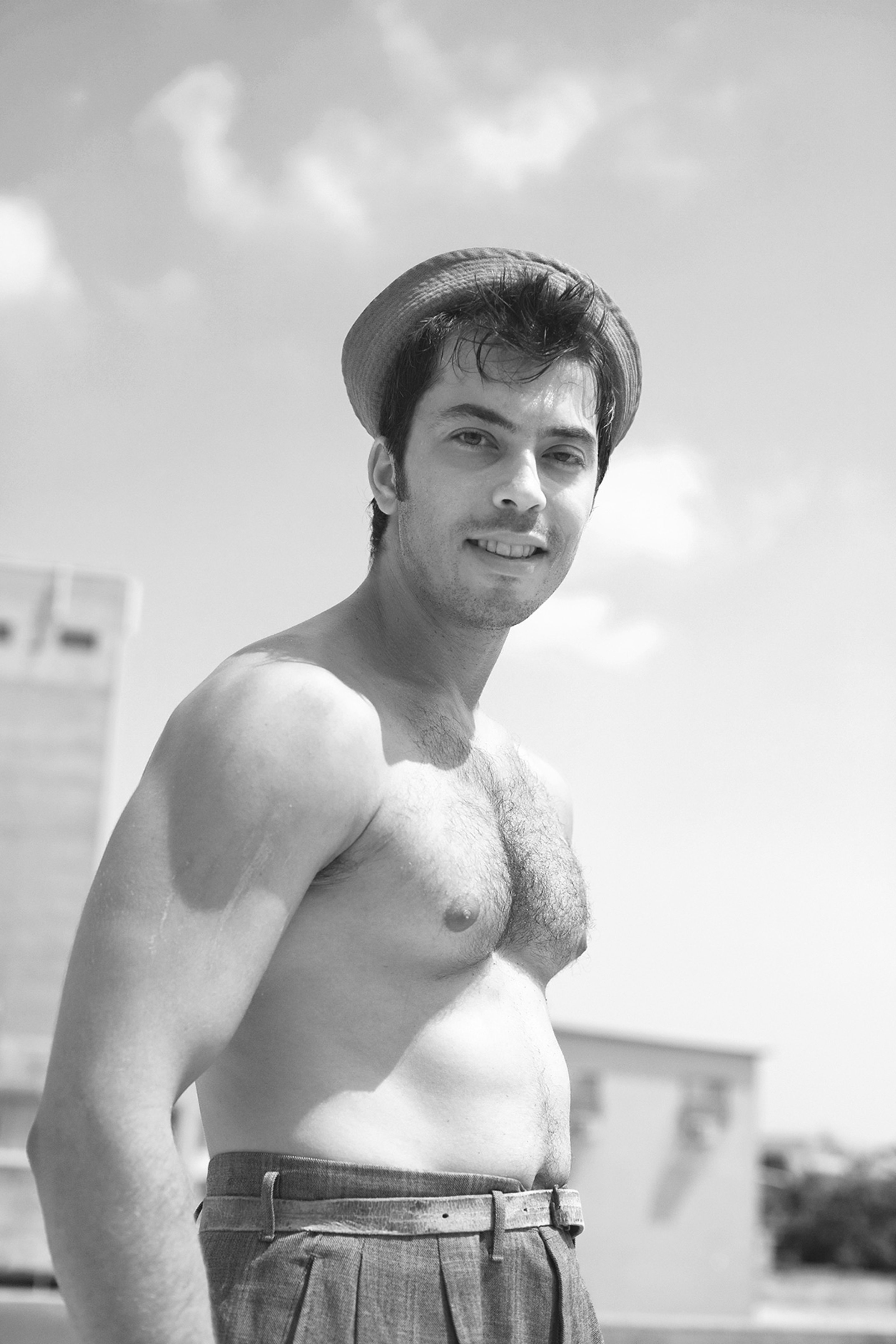
B/w photograph
50,6 × 40,4 cm; 64,8 × 48 × 1,3 cm framed
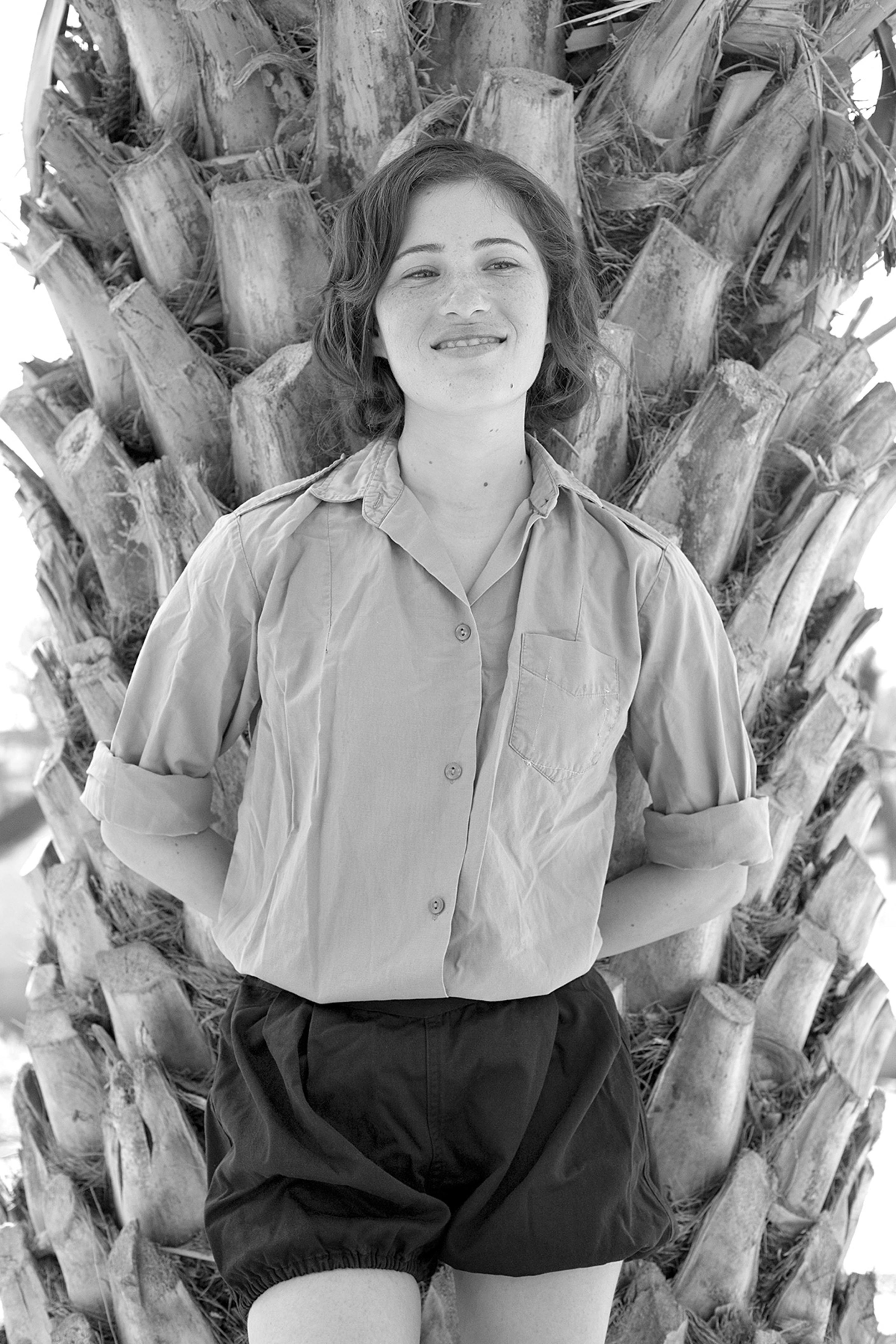
B/w photograph
50,6 × 40,4 cm; 64,8 × 48,1 × 1,3 cm framed
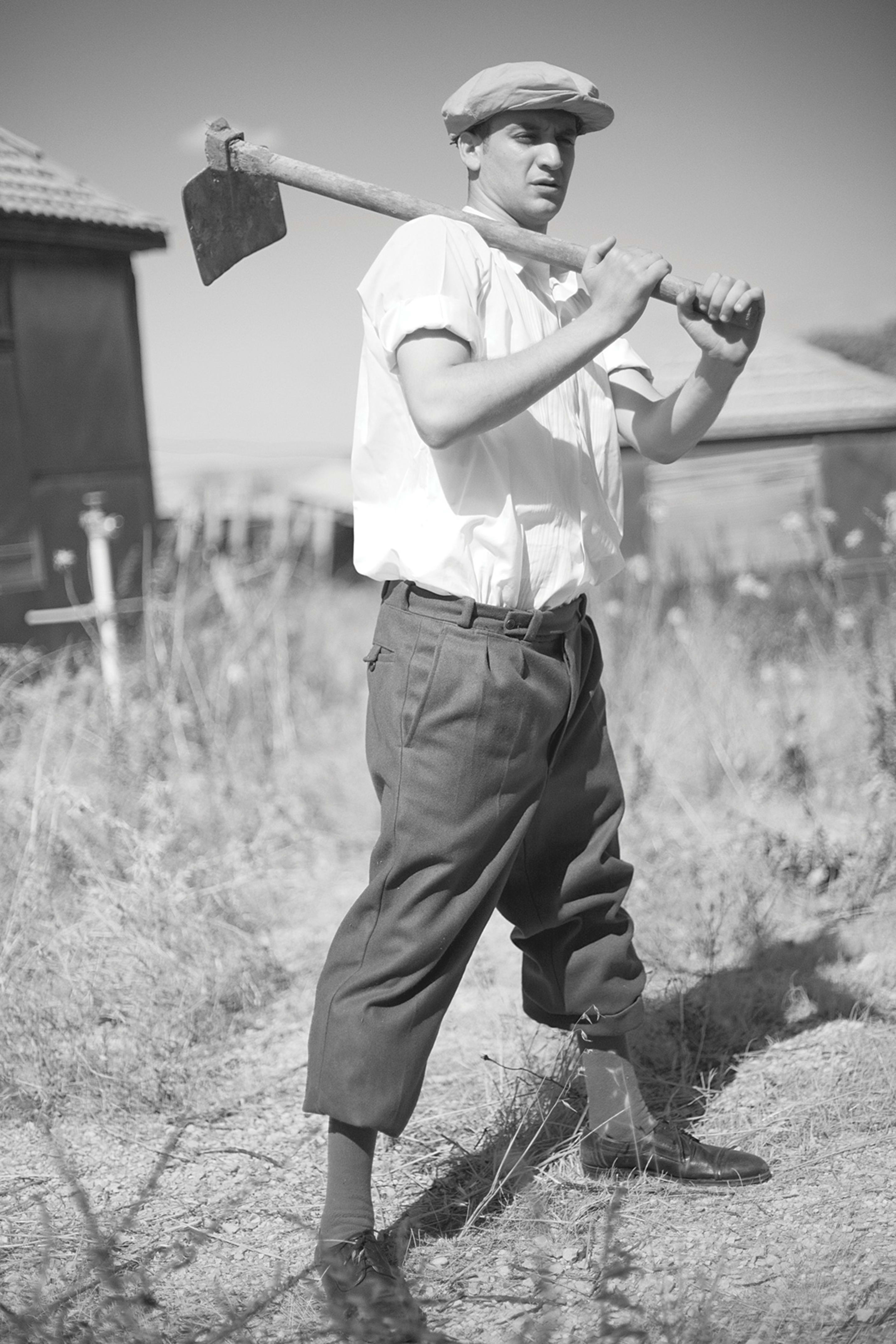
B/w photograph
50,6 × 40,4 cm; 64,8 × 48 × 1,3 cm framed
The study room in the exhibition at the Jewish Museum Berlin is a place for rising above ignorance and stereotypes. The neon sculpture What if Women Ruled the World prompts visitors to contemplate imagination and questions of personal responsibility in society. Surrounded by Yael Bartana’s self-portraits in various personas, visitors are invited to read the exhibition publication, The Book of Malka Germania. This volume, published by DCV Books, follows the epiphany of Malka Germania in five chapters whose layout is modeled on that of the Talmud, the central text in Rabbinical Judaism. This organization reflects the polyphonic complexity, rich nuance, and ambivalence that the work casts into visuals and underscores that there is no simple answer. The book includes an interview with Yael Bartana and contributions by Sami Berdugo, Christina von Braun, Michael Brenner, Max Czollek, and others.
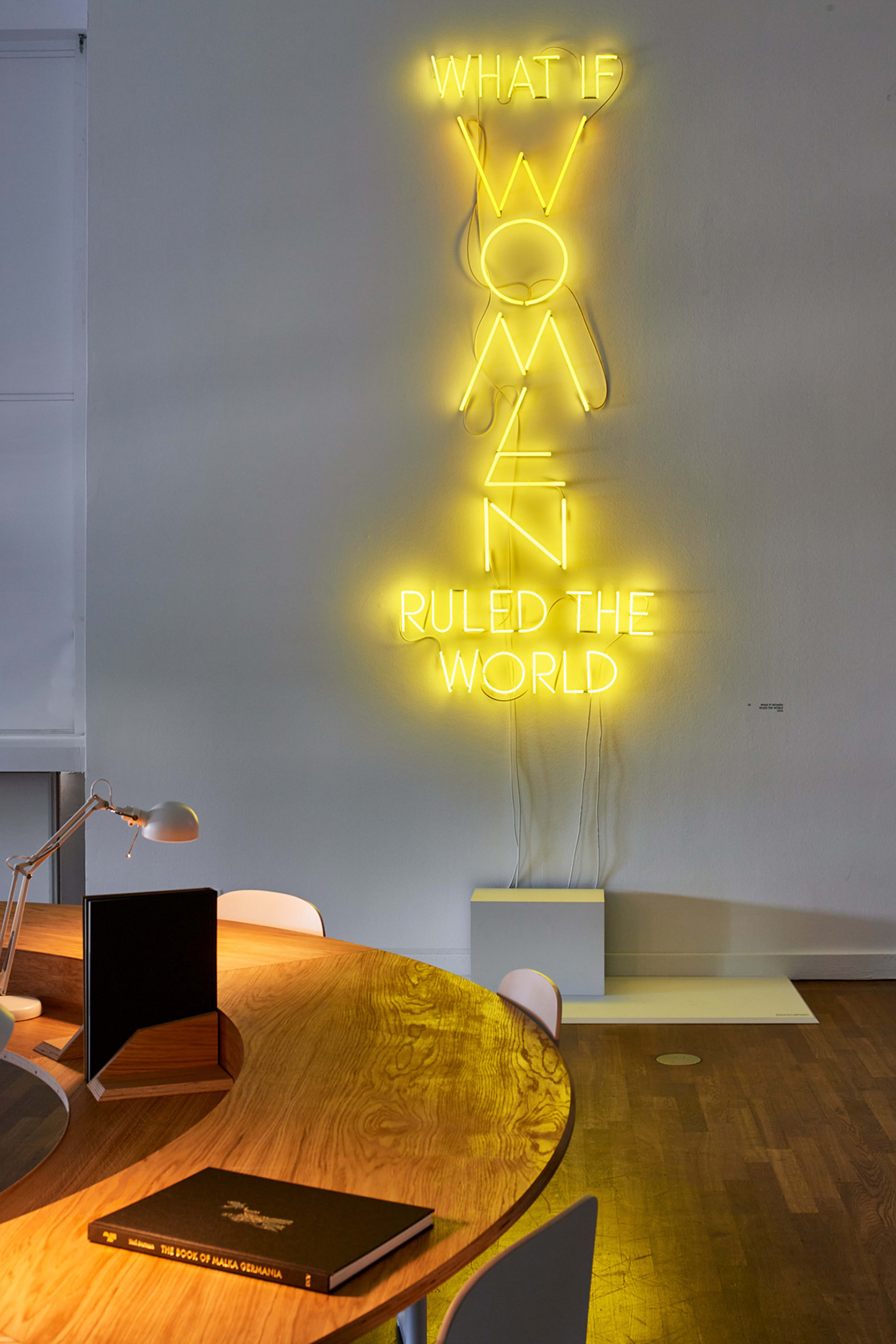
Photo: Yves Sucksdorff
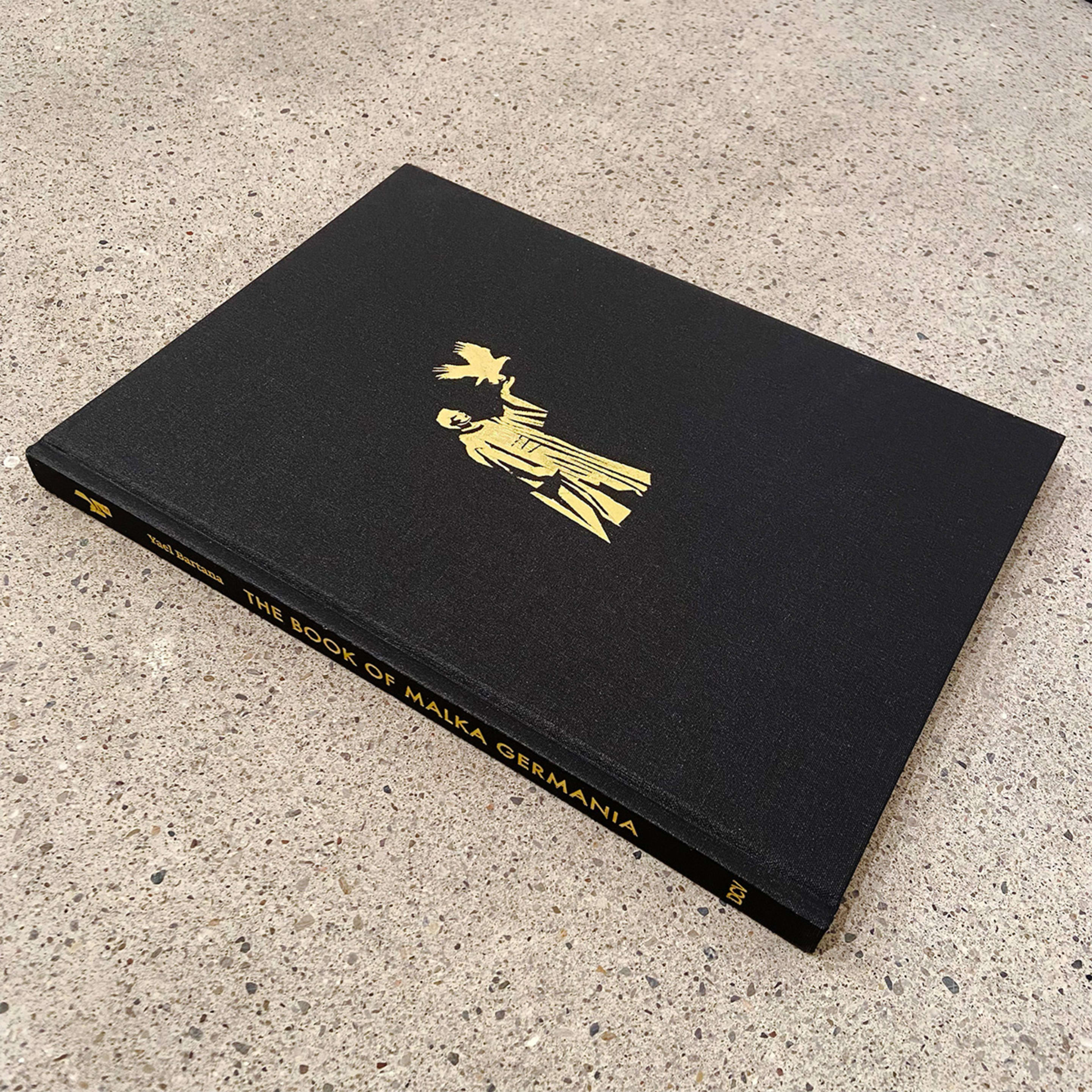
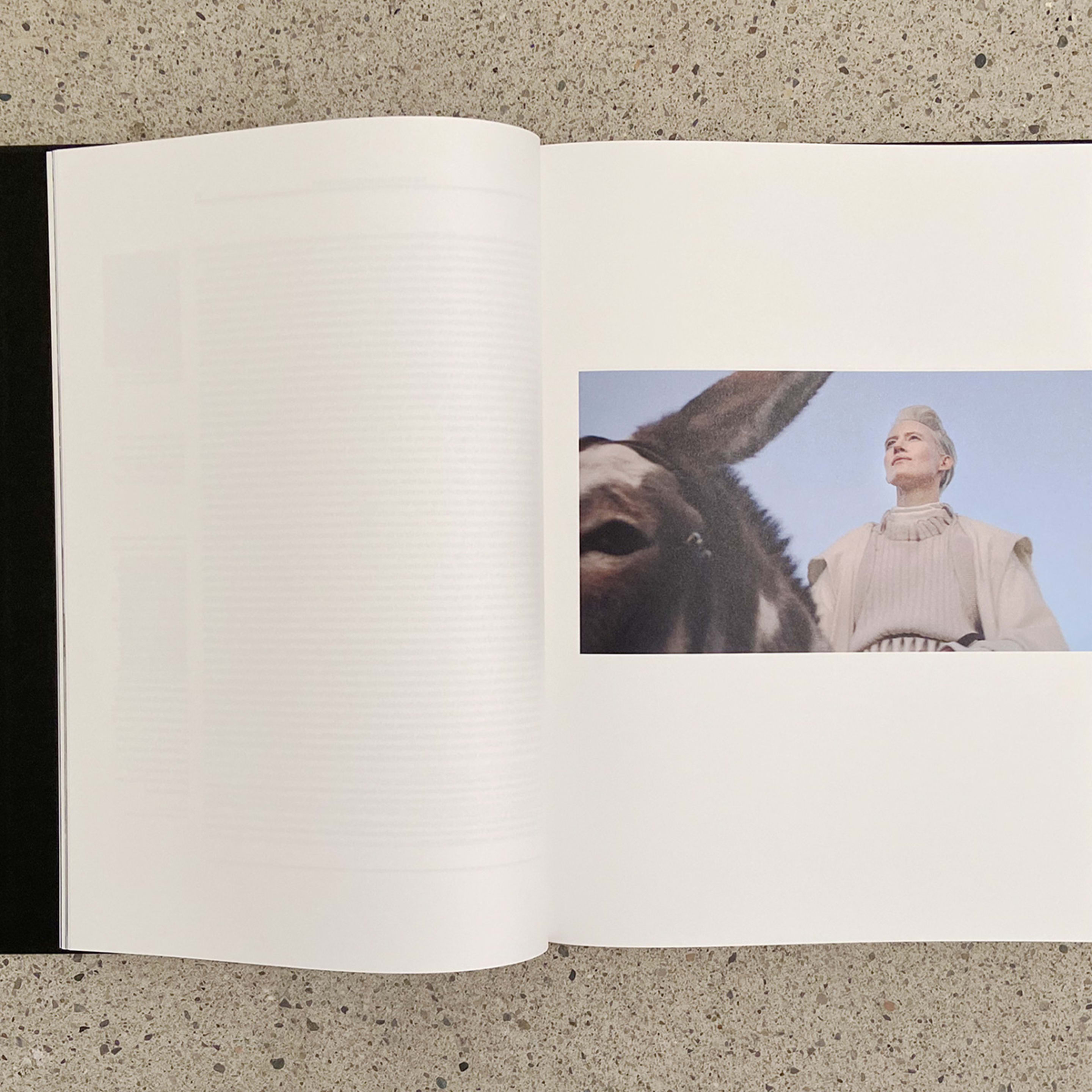
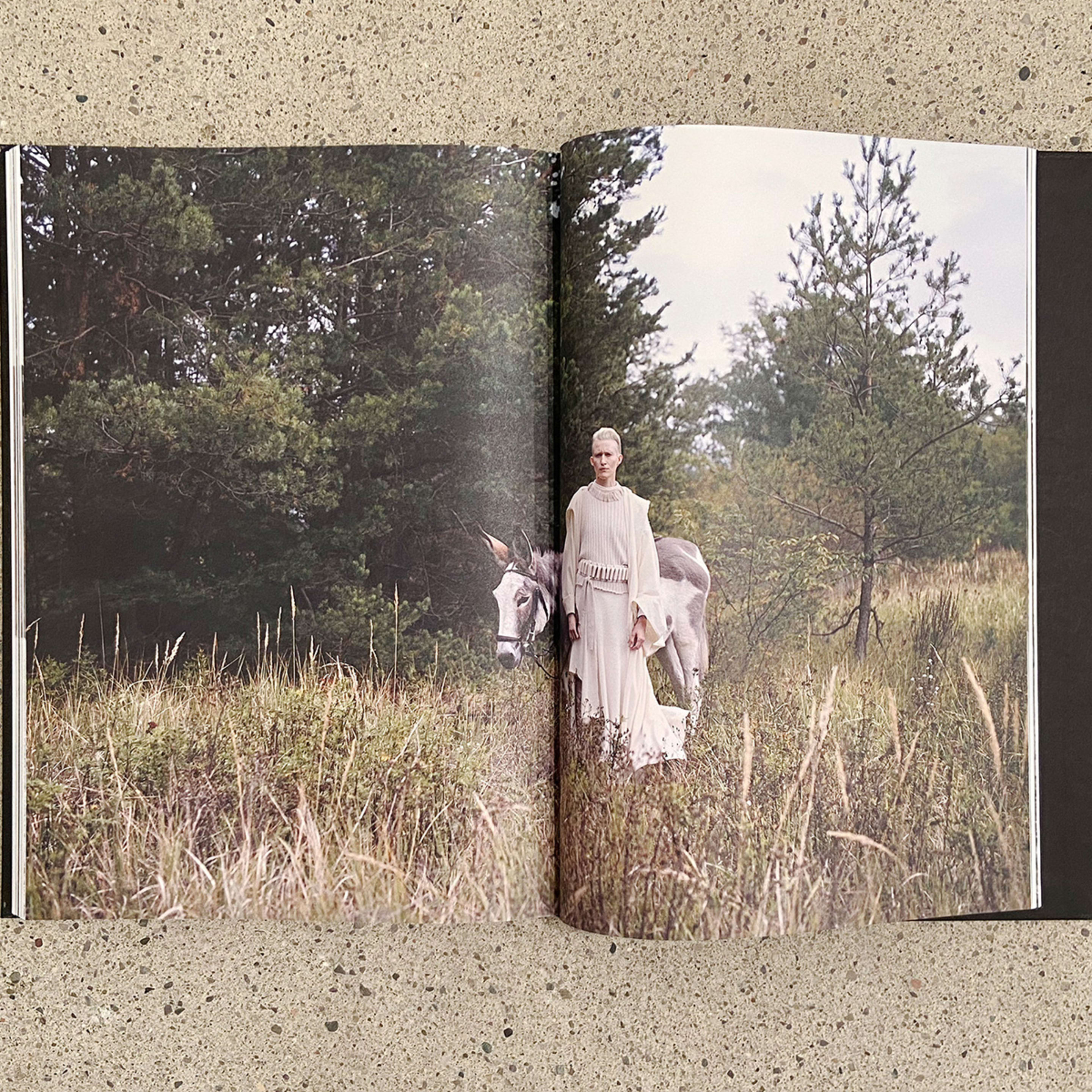
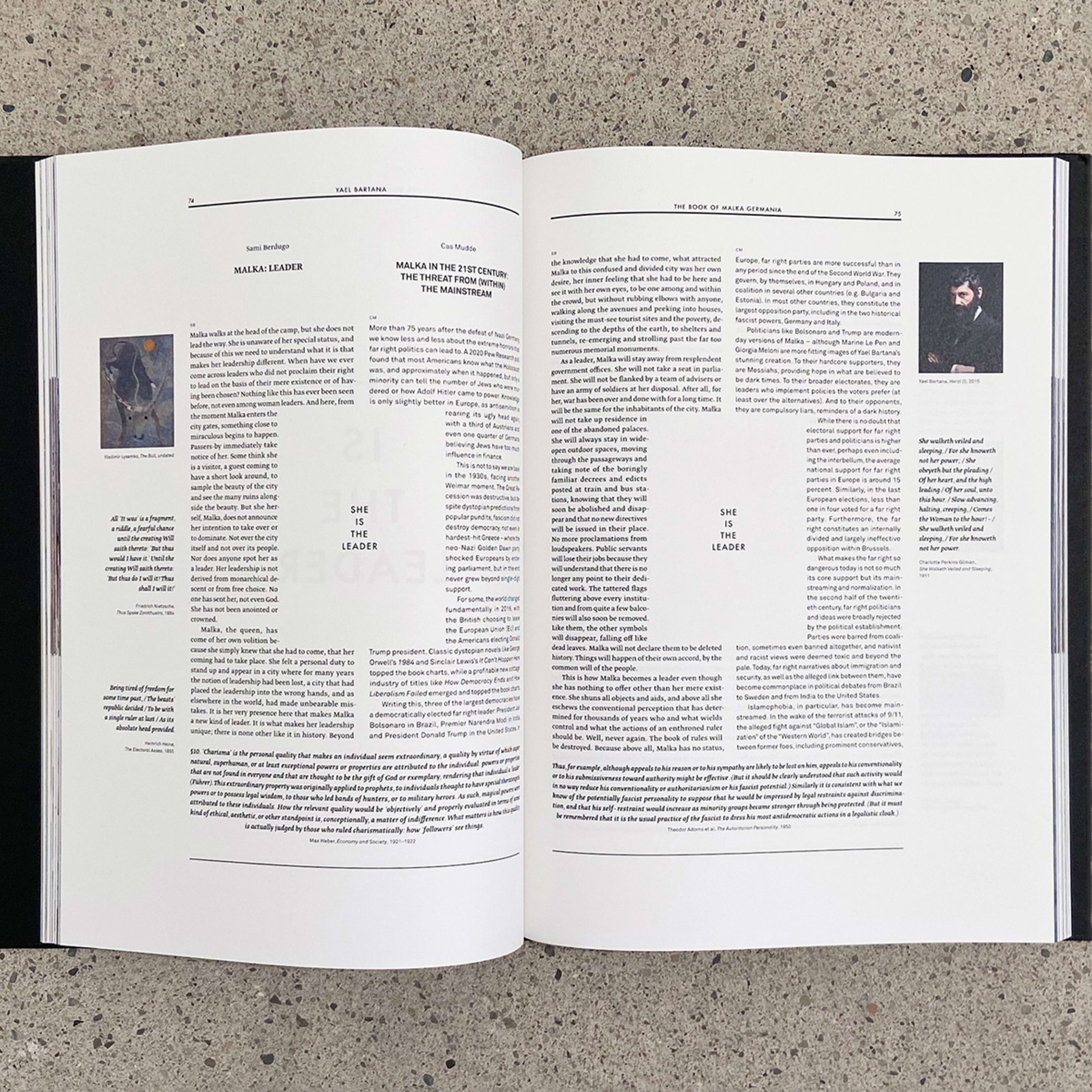
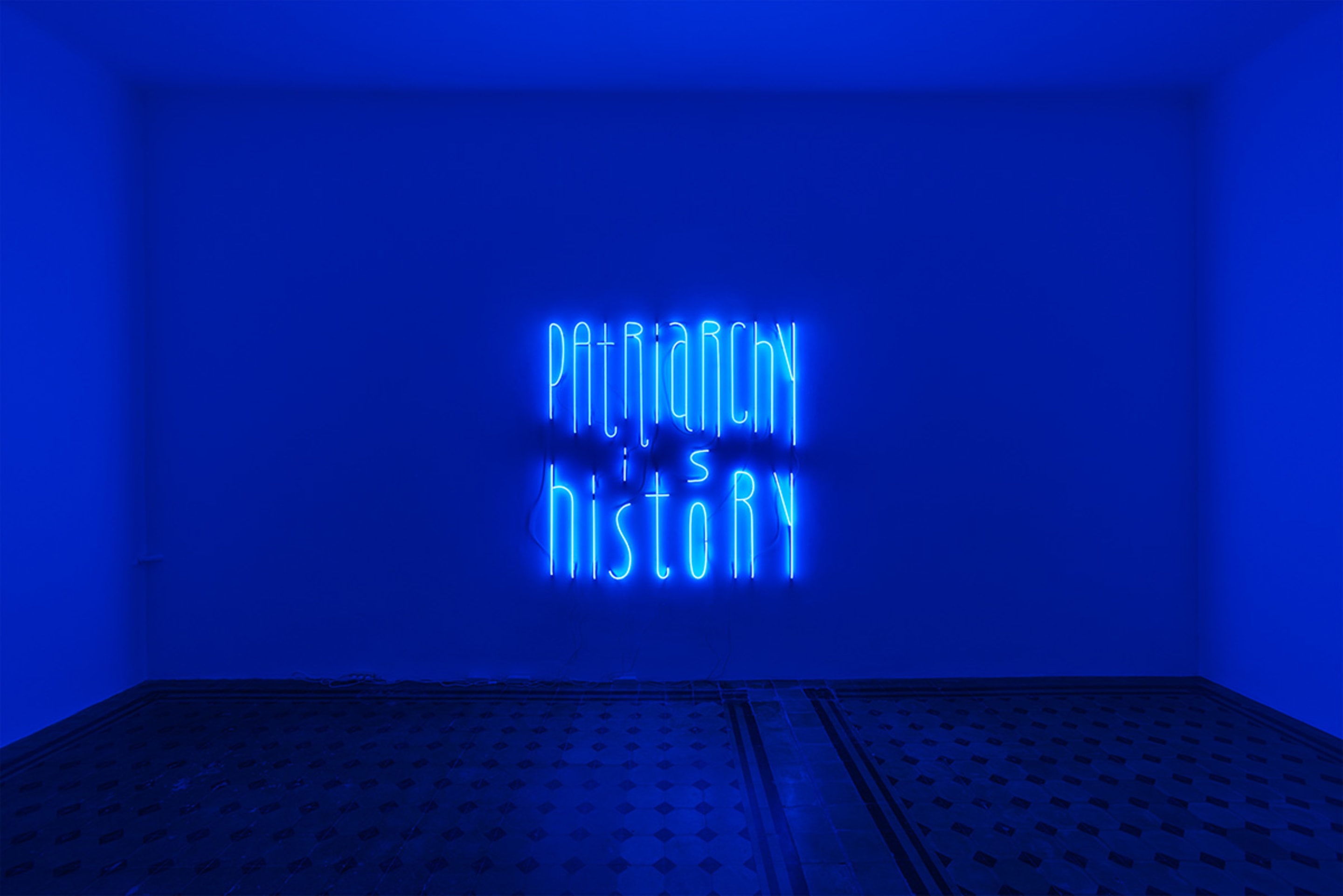
Photo: t-space studio
Patriarchy is History, Yael Bartana’s third solo exhibition at Galleria Raffaella Cortese in 2020, presented recent works across video, photography, sculpture, and neon. In the video below, Bartana herself gives some key insights into the exhibited works.
As part of the exhibition, Bartana presented her video The Undertaker (2019) for the first time in Italy. Filmed in Philadelphia, the birthplace of American democracy and location of the artist’s solo show at the Philadelphia Museum of Art in 2018, the work generated from the public performance Bury Our Weapons, Not Our Bodies! in which a ceremonial march was led by a mysterious leader. Sternly holding weapons, the crowd strides through the streets of the city towards Laurel Hill Cemetery, where the burial of the weapons takes place. Inspired by military processions as war celebrations, the project came into being within a reality which celebrates the right to bear arms and use them. Reacting to the second amendment of the US constitution, the ritual assumes a strong meaning as a call for the end of the destructive gun culture. Global symbols of perpetuation of violence and subject of large and poignant discussions on public policy in the Western world, the imagery of weapons hold a renewed symbolic power. The performance in Philadelphia was inspired by the choreography of Israeli movement-composer Noa Eshkol (1924–2007) from 1953.
In the space in via Stradella 1 the artist presented a photographic series investigating the several nuances of gestures, elements, and symbols that make up the actions of Bury Our Weapons, Not Our Bodies!. The displaced composition on the wall recalls classic and modern painting collections, and acts as a current investigation by Bartana on the way to present photography.
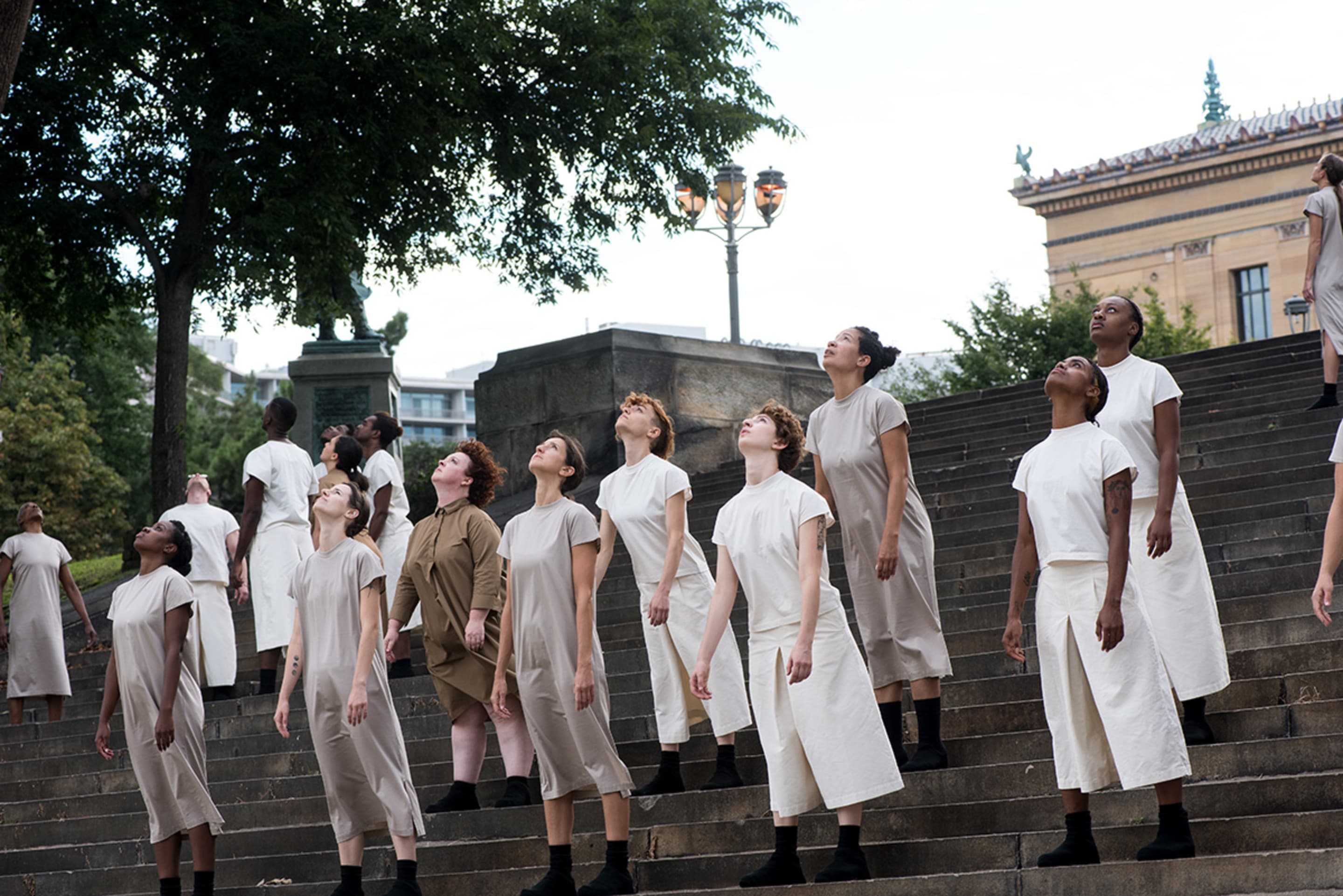
Color photograph
45 × 67,5 cm; 57,5 × 80 × 4 cm framed
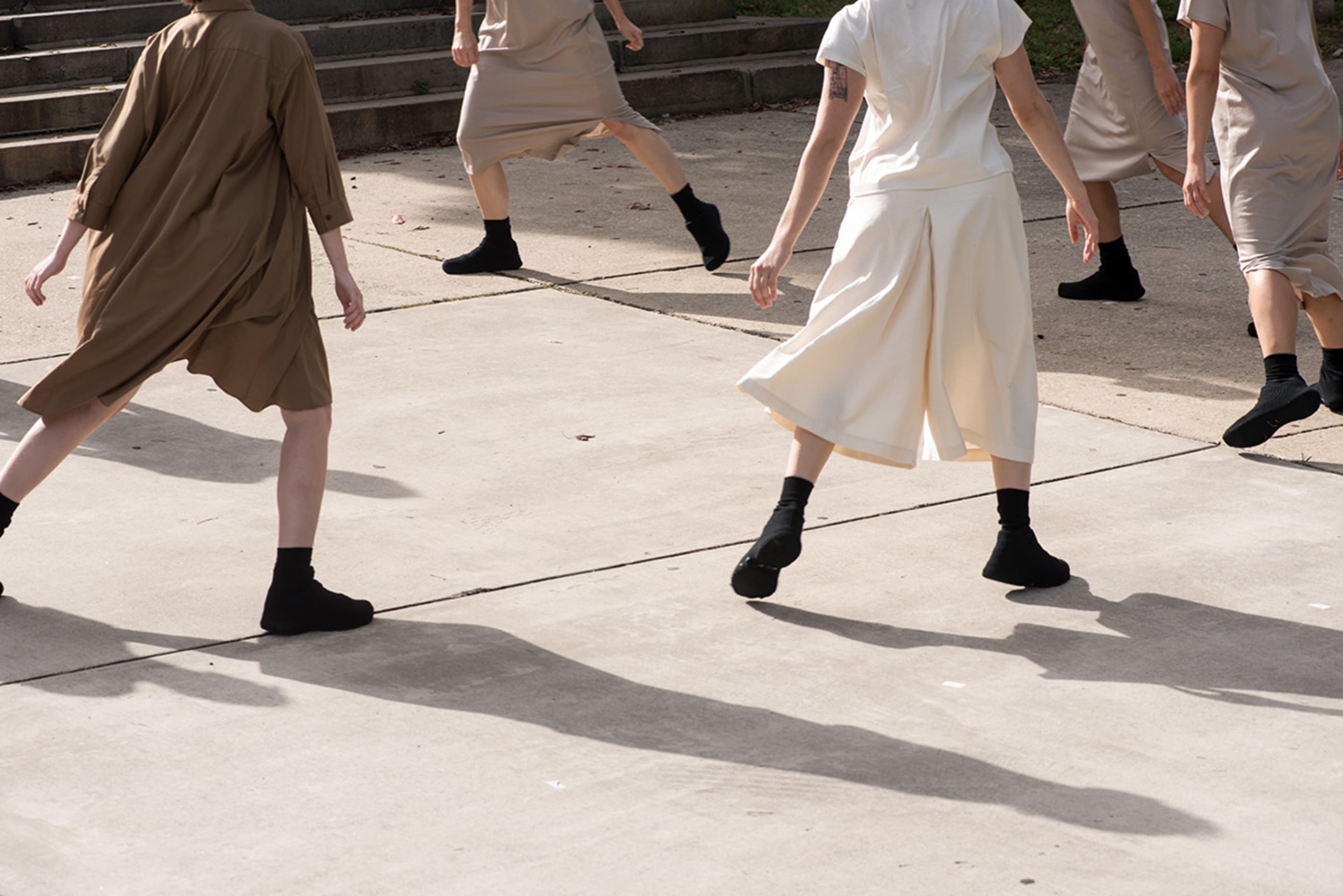
Color photograph
45 × 67,5 cm; 57,5 × 80 × 4 cm framed
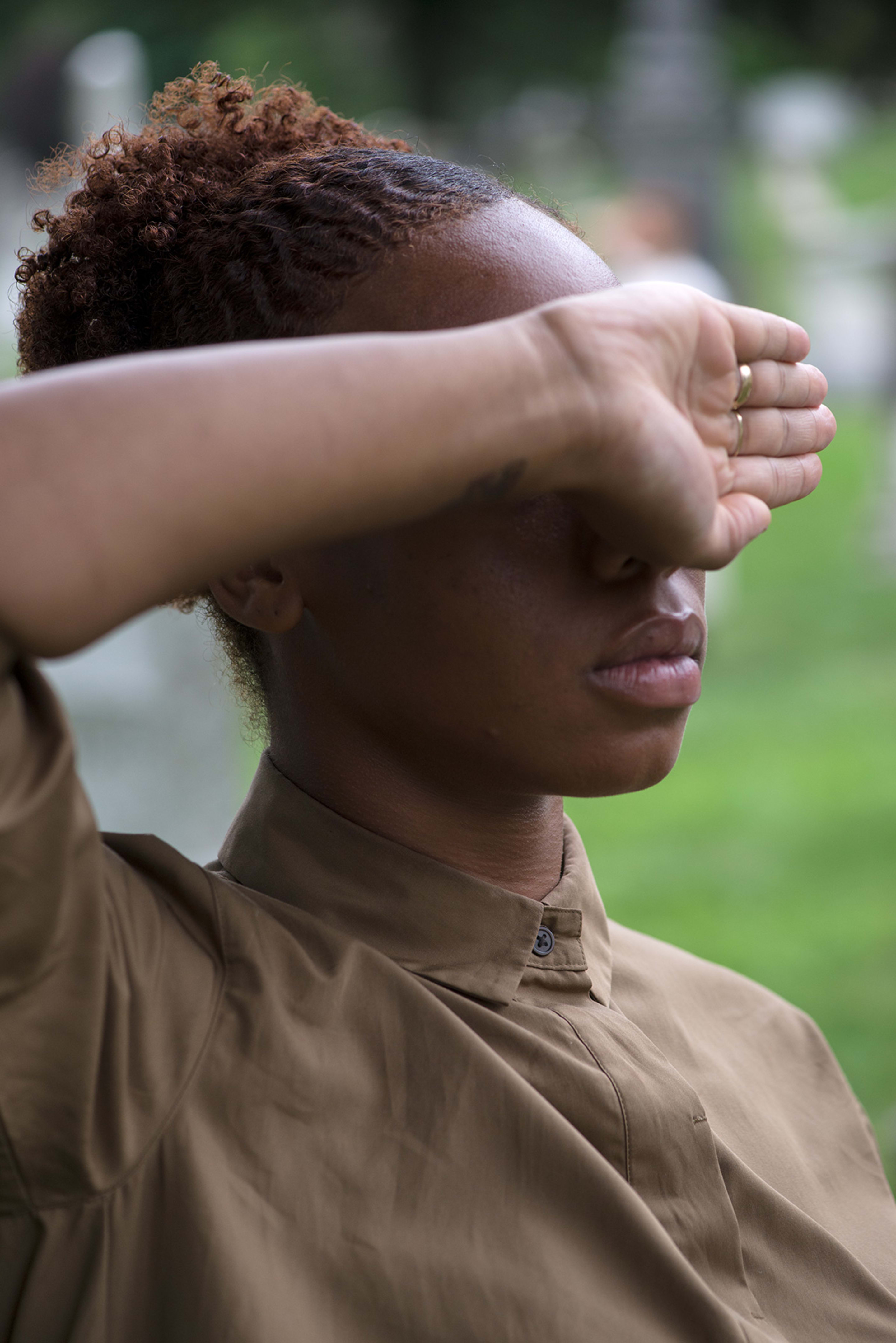
Color photograph
45 × 30 cm; 57,5 × 42,5 × 4 cm framed
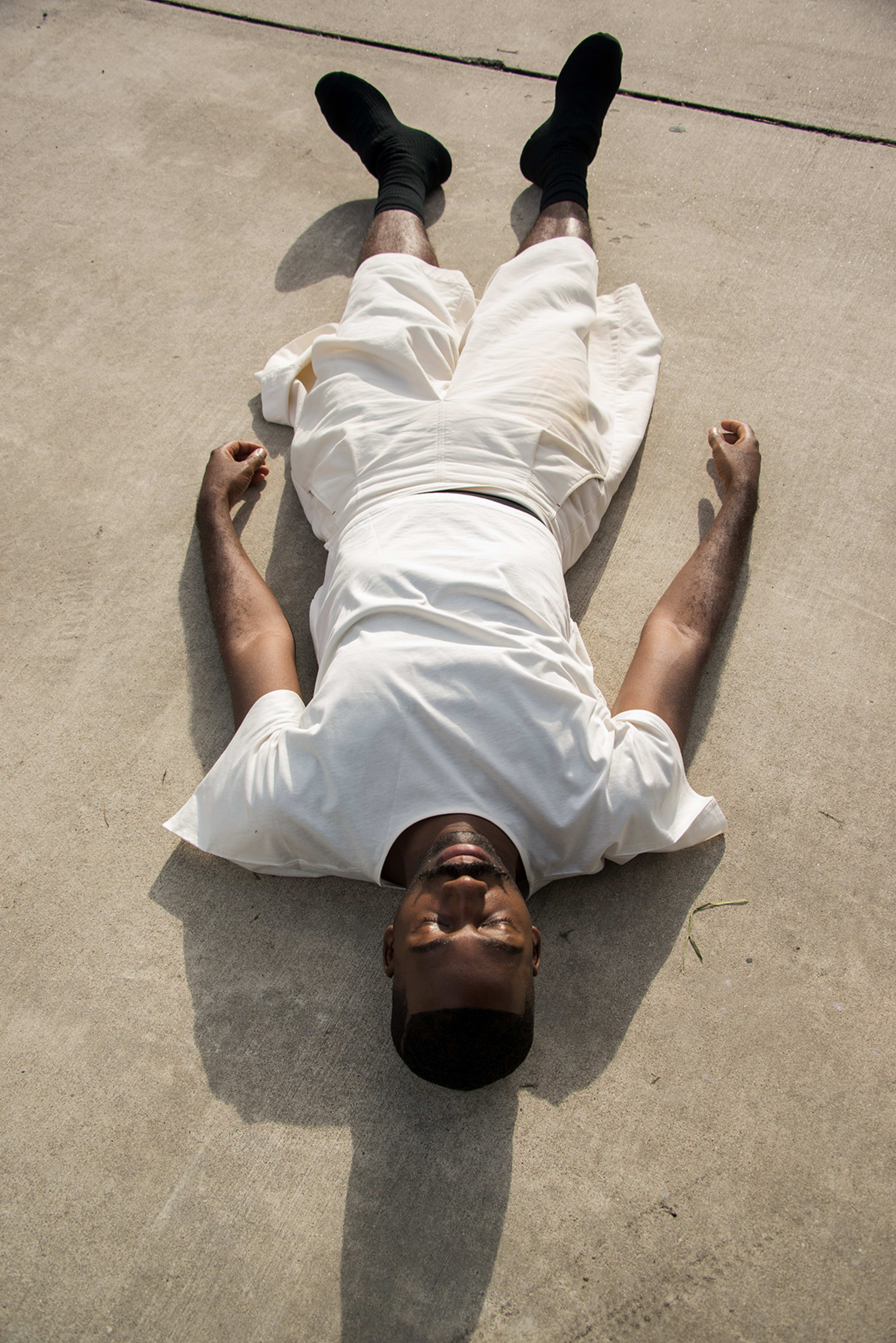
Color photograph
45 × 30 cm; 57,5 × 42,5 × 4 cm framed
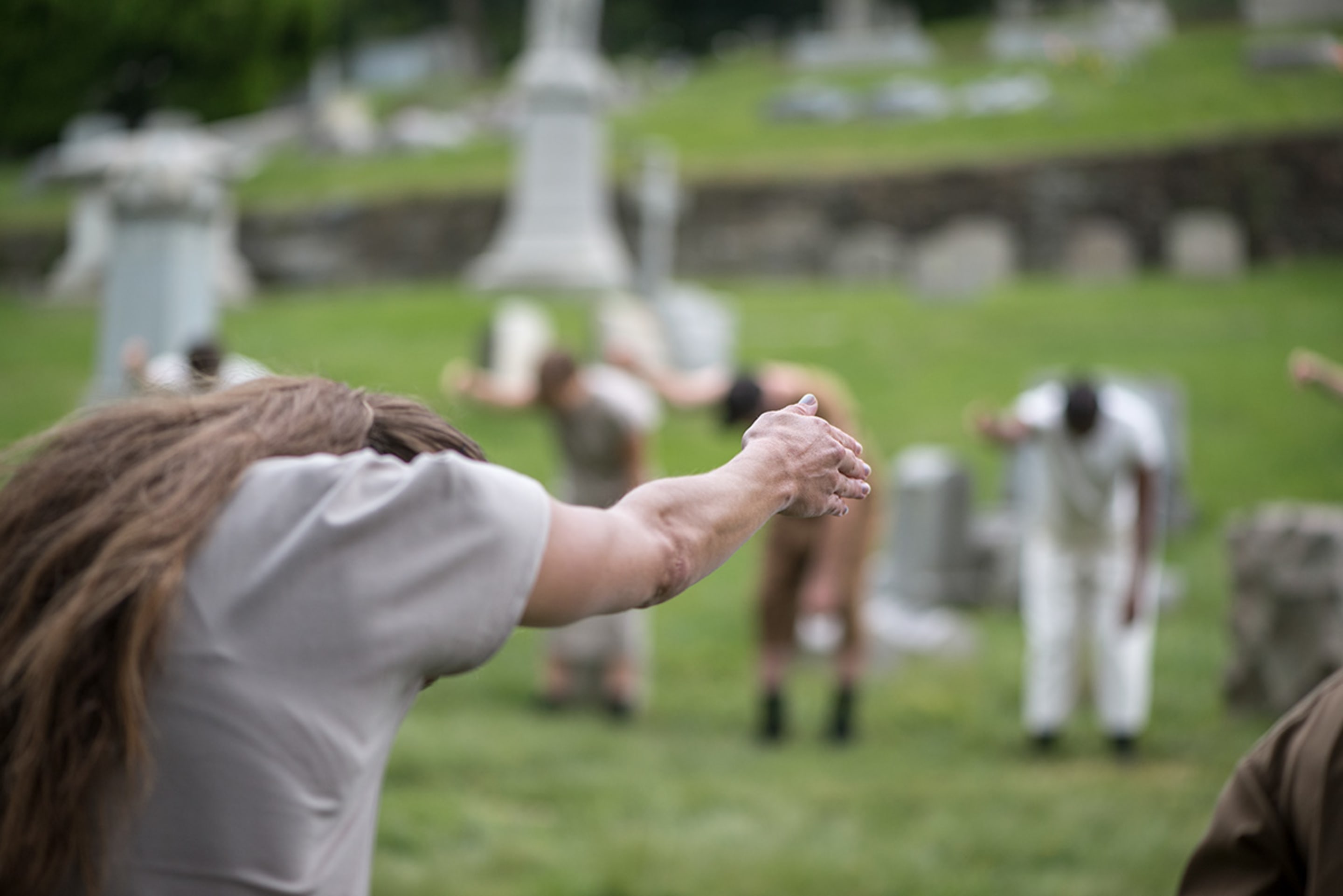
Color photograph
30 × 45 cm; 42,5 × 57,5 × 4 cm framed
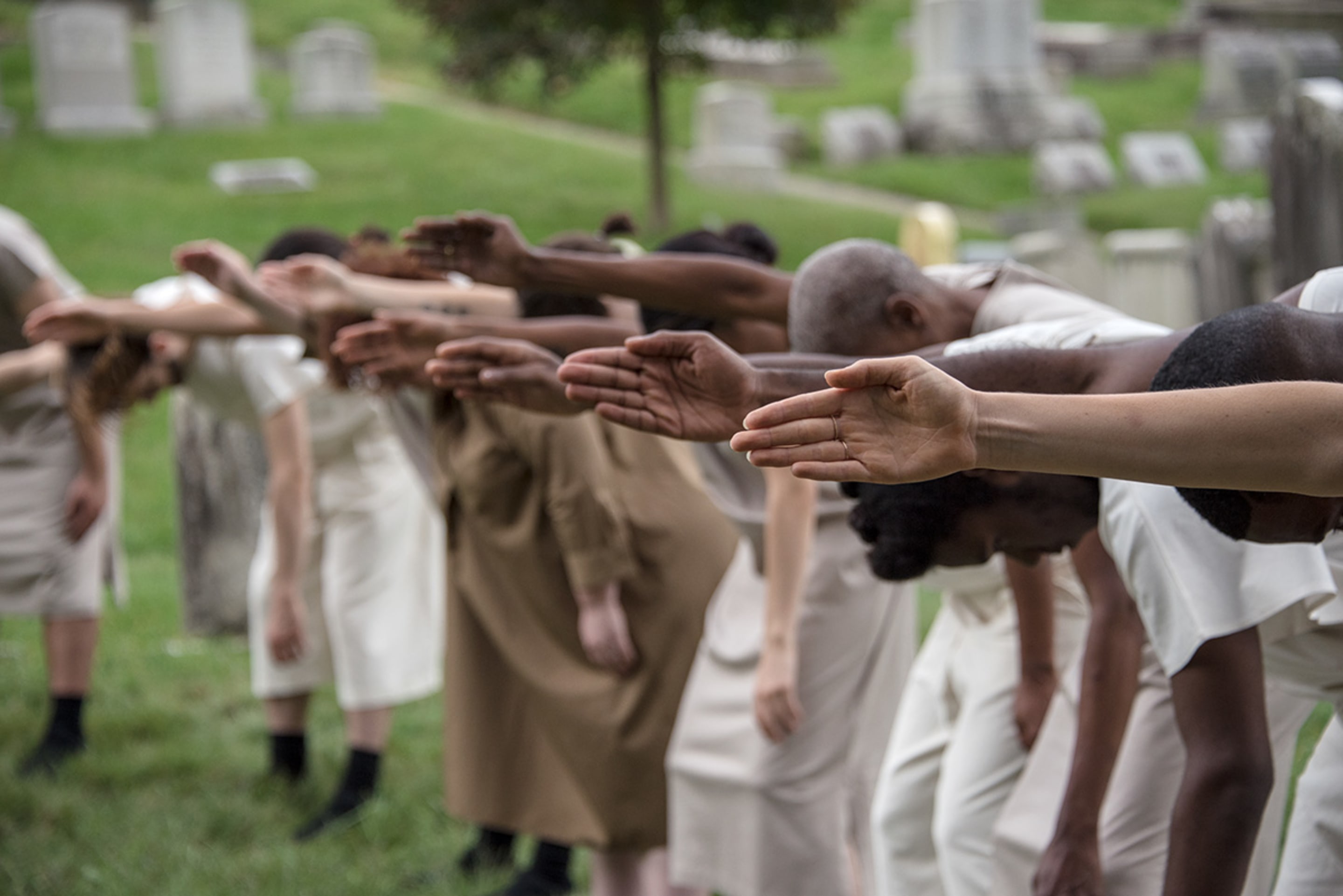
Color photograph
30 × 45 cm; 42,5 × 57,5 × 4 cm framed
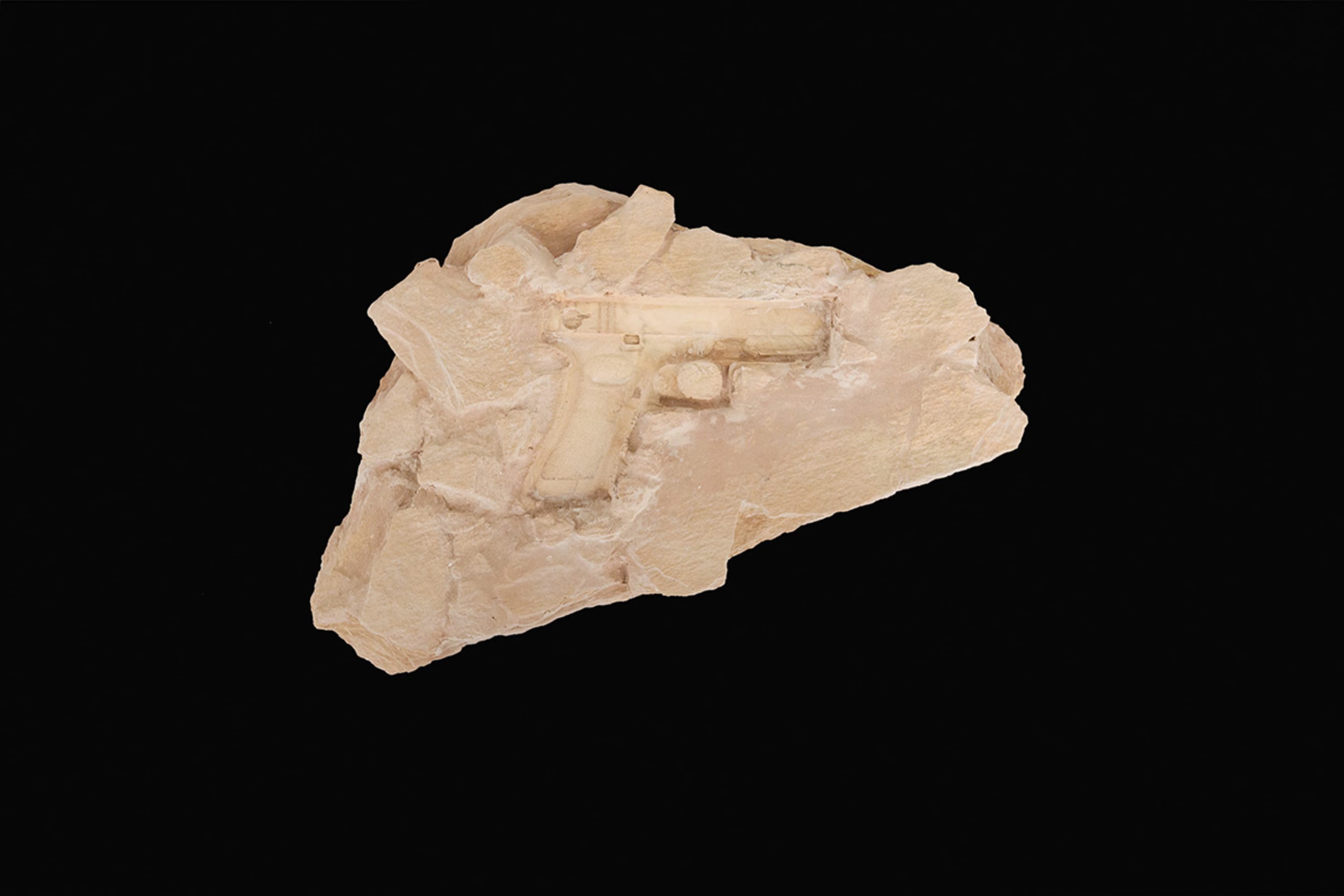
The sculptures from The R.I.P. Series envision a future where weapons, rather than bodies, have become entombed. By excavating the apparatus of killing, Bartana questions the imaginary possibility of reconciling the violence of past societies. Bartana evokes this alternative-reality by alluding to notions of museology and institutionalization; she honors these symbols of violence by placing them on pedestals as if they were artifacts of a distant past, rather than perpetuators of the tumultuous present.
This neon work is, as often happens in the Bartana’s research, a direct and eloquent statement prompted not only by recent events and discourses, but as a systemic reality of global History. This work is yet another outcome of the artist’s interdisciplinary project What if Women Ruled the World? (2017–2021) that was presented in Manchester, Aarhus, and Berlin.
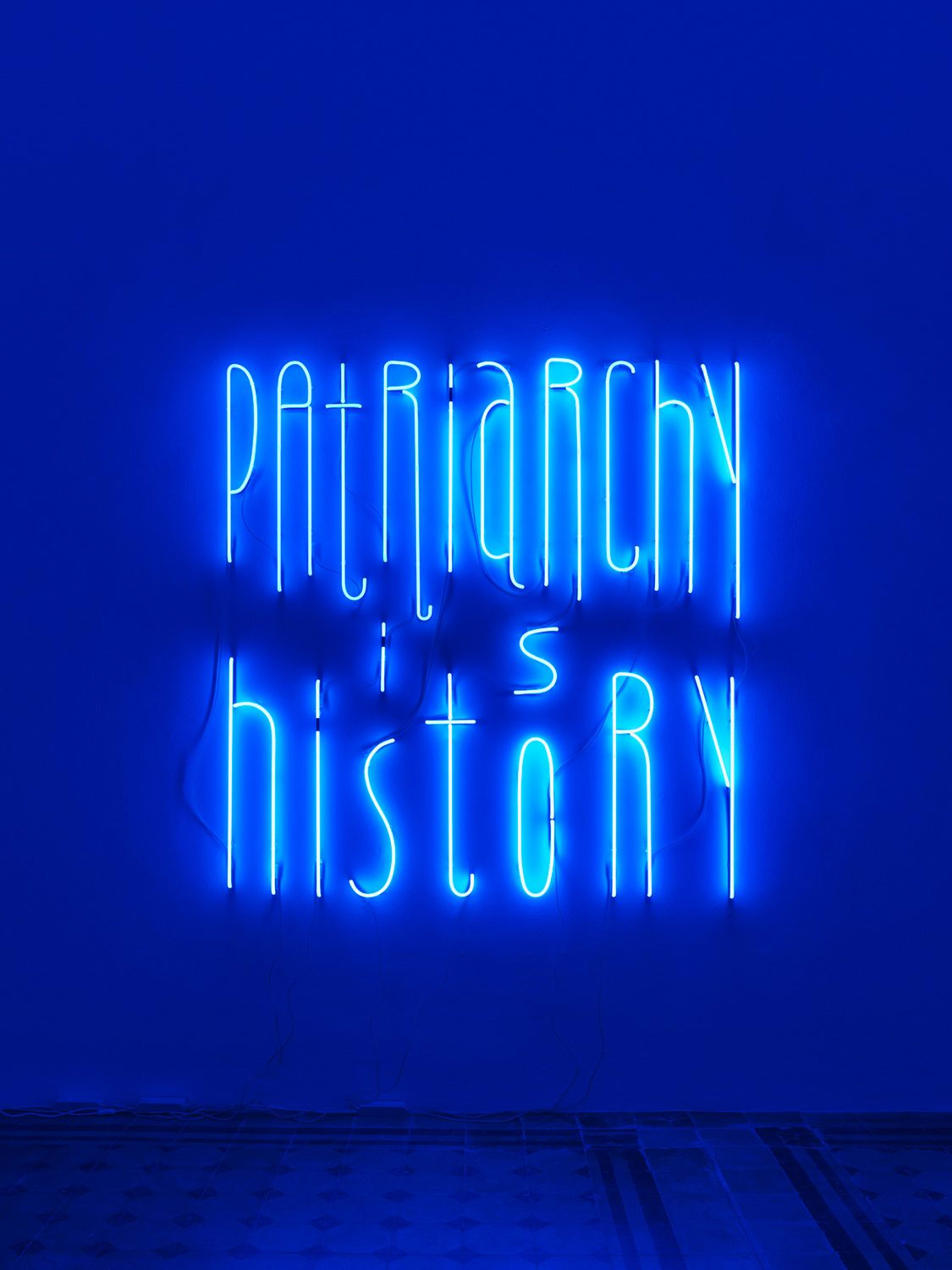
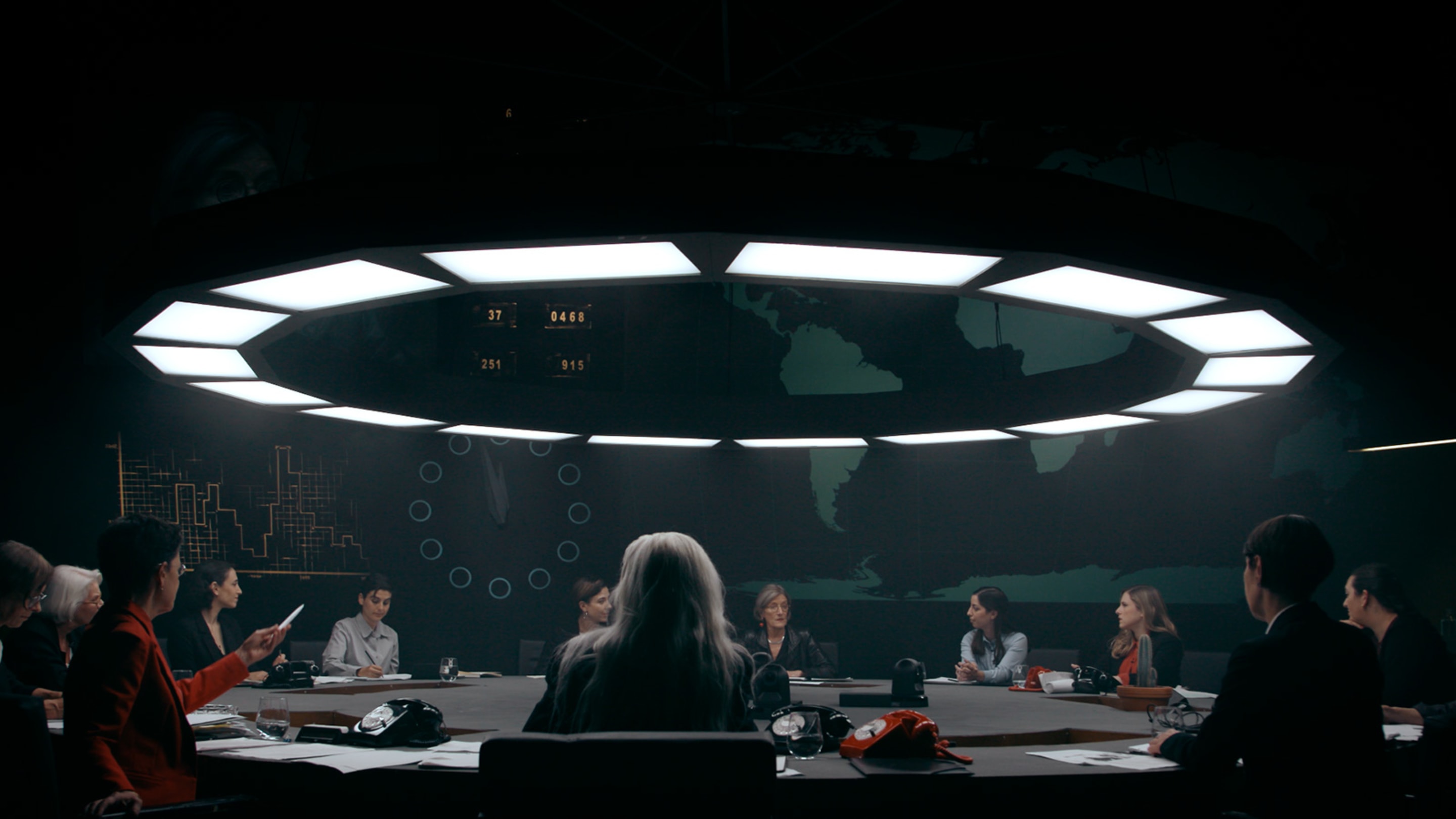
The video work Two Minutes to Midnight is the final stage of Yael Bartana’s transdisciplinary project What if Women Ruled the World?, which the artist developed across four years (2017–2021). Incorporating footage recorded during experimental public performances at the MIF Manchester International Festival 2017, Aarhus European Capital of Culture 2017 and the Volksbühne theater in Berlin, Two Minutes to Midnight presents a filmic synthesis of the series’ ideas, images and actions. By placing real-life participants within a fictional environment, and mixing scripted material with improvised discussions, the project explores what would happen if countries around the world were governed by women.
Bartana’s recent neon work, CRISIS – CRYSIS – CRYCIS, is a playful demonstration of imaginary and alternative etymological origins for a term that has become a banal cliché in recent times. Phonetically dismantling the term, she alludes to the original Greek meaning of the word, ‘krisis’, which means a turning point that could lead to both catastrophe as well as opportunity. Doing so, the work touches upon notions of foreignness, calling for solidarity within marginalised communities and demanding a re-evaluation of patriarchal values.
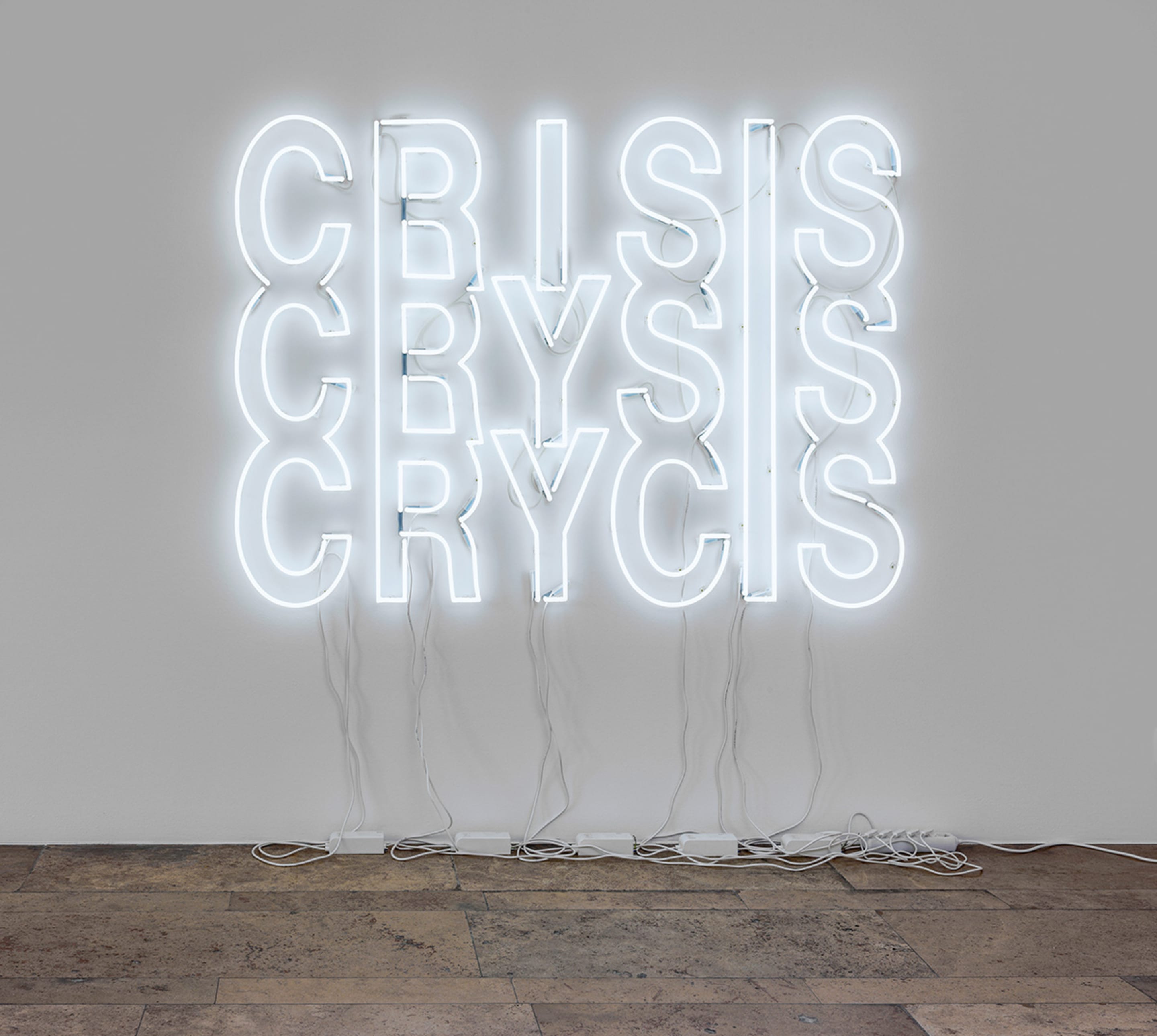
Neon light
140 × 200 cm
Photo: Gunter Lepkowski
Yael Bartana’s photographic series Cast Off generates from her 2017 video Tashlikh (Cast Off). The work serves as a platform for both perpetrators and survivors of various genocides or ethnic persecutions – the Holocaust, the Armenian Genocide, as well as Sudanese and Eritrean ethnic cleansing or civil wars – to confront their personal material links to the horrors of the past. For this project, a filmic meeting point was created for people and objects, in which they symbolically rid themselves of objects that have survived the traumas of genocide. Inspired by the Jewish custom of “Tashlikh” where casting bread or other objects into a river symbolises a relinquishing of sins, Bartana’s work generates a new ritual that consists of the deliberate discarding of objects as a means of psychological liberation.
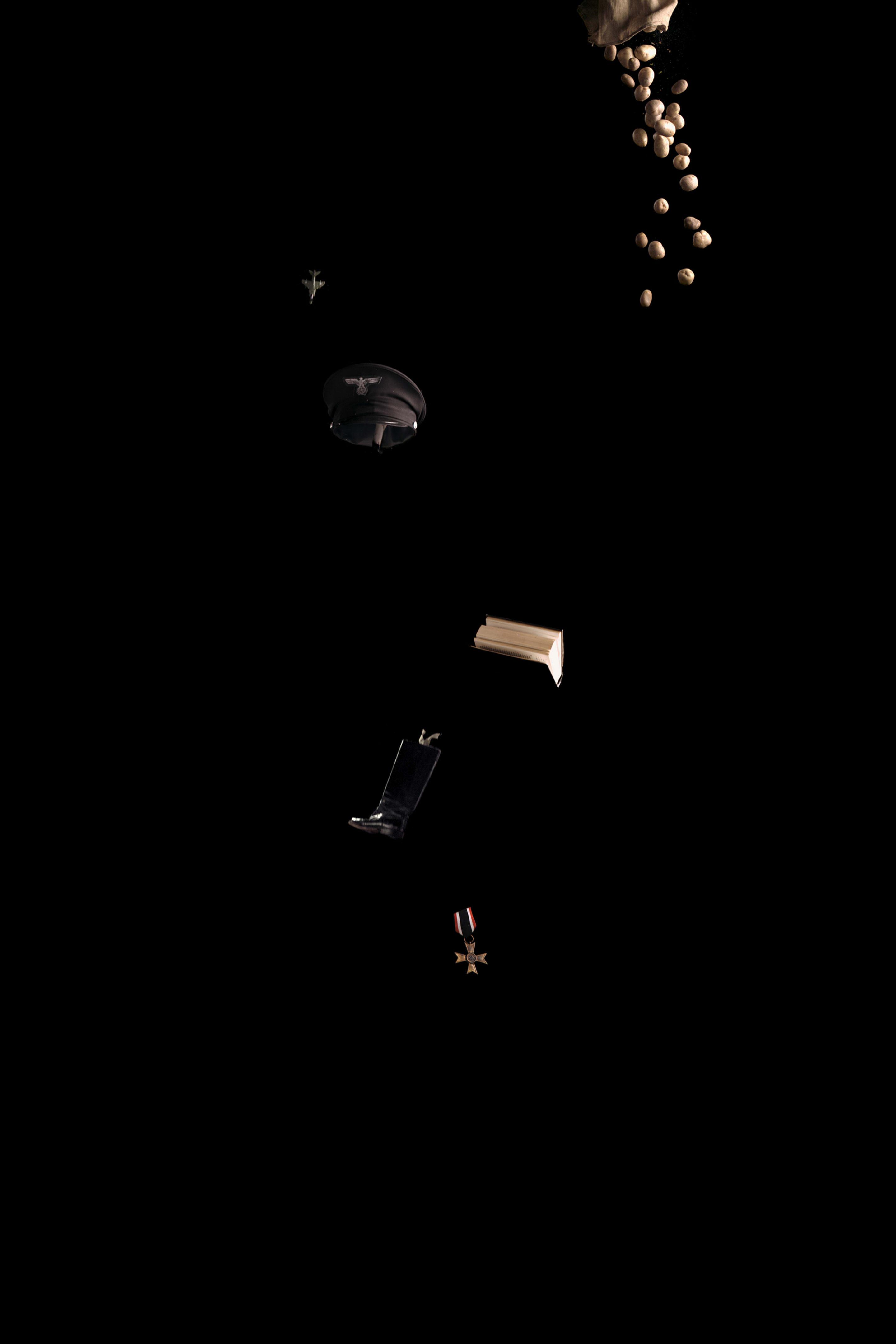
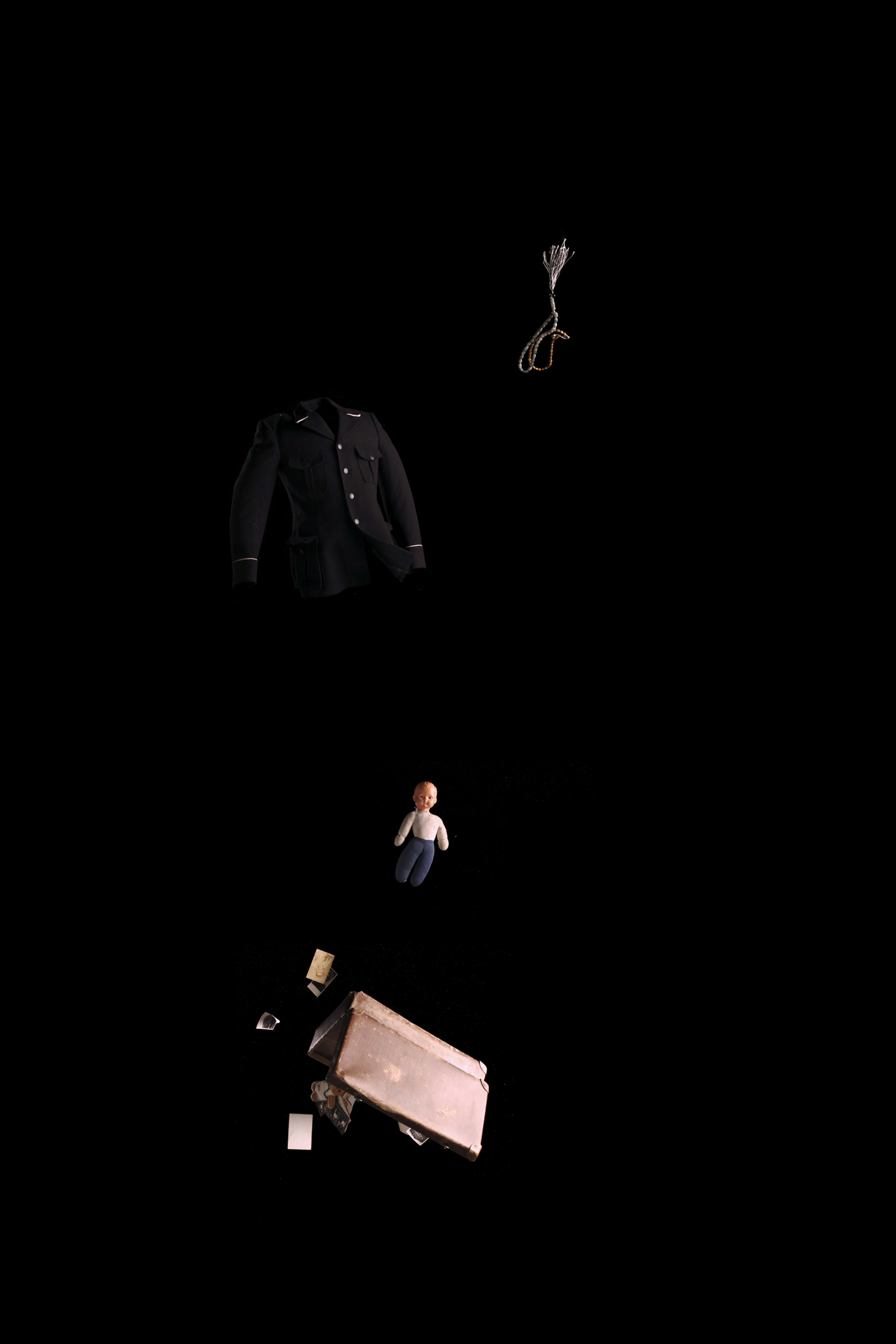
In 2015 Bartana realized a photographic series where she positioned herself in front of the camera for the first time. Dressed in different familiar costumes – an Israeli soldier, an SS officer – the artist metamorphoses into other identities while playing on clichés and archetypes and creating a sort of mutation, a poetic juxtaposition of diverse cultures, of past and present. In this project, Bartana reflects on the responsibility of an individual towards the society and its components, questioning not only the role of the single soldier or civilian, but that of the artist as well.
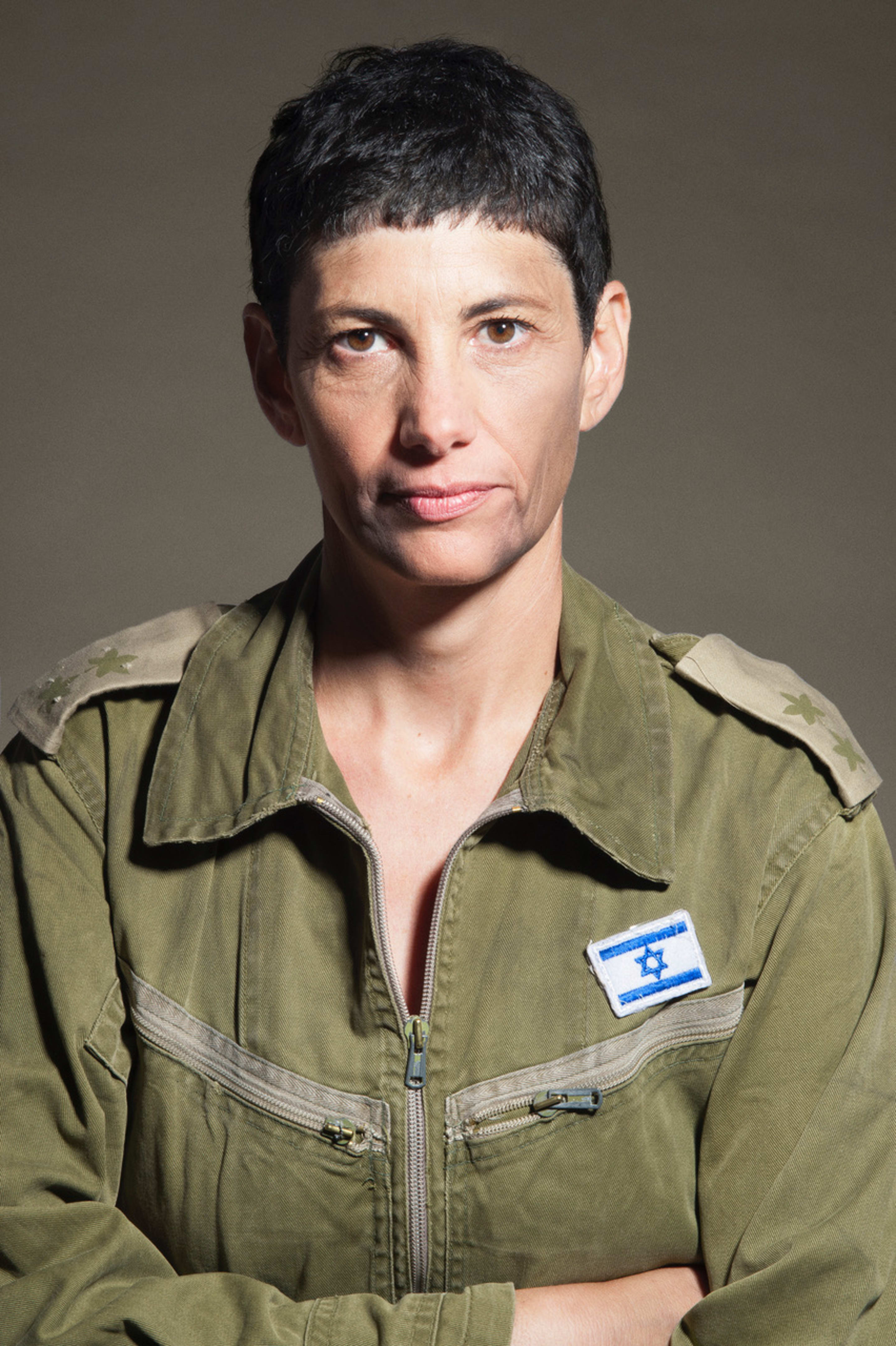
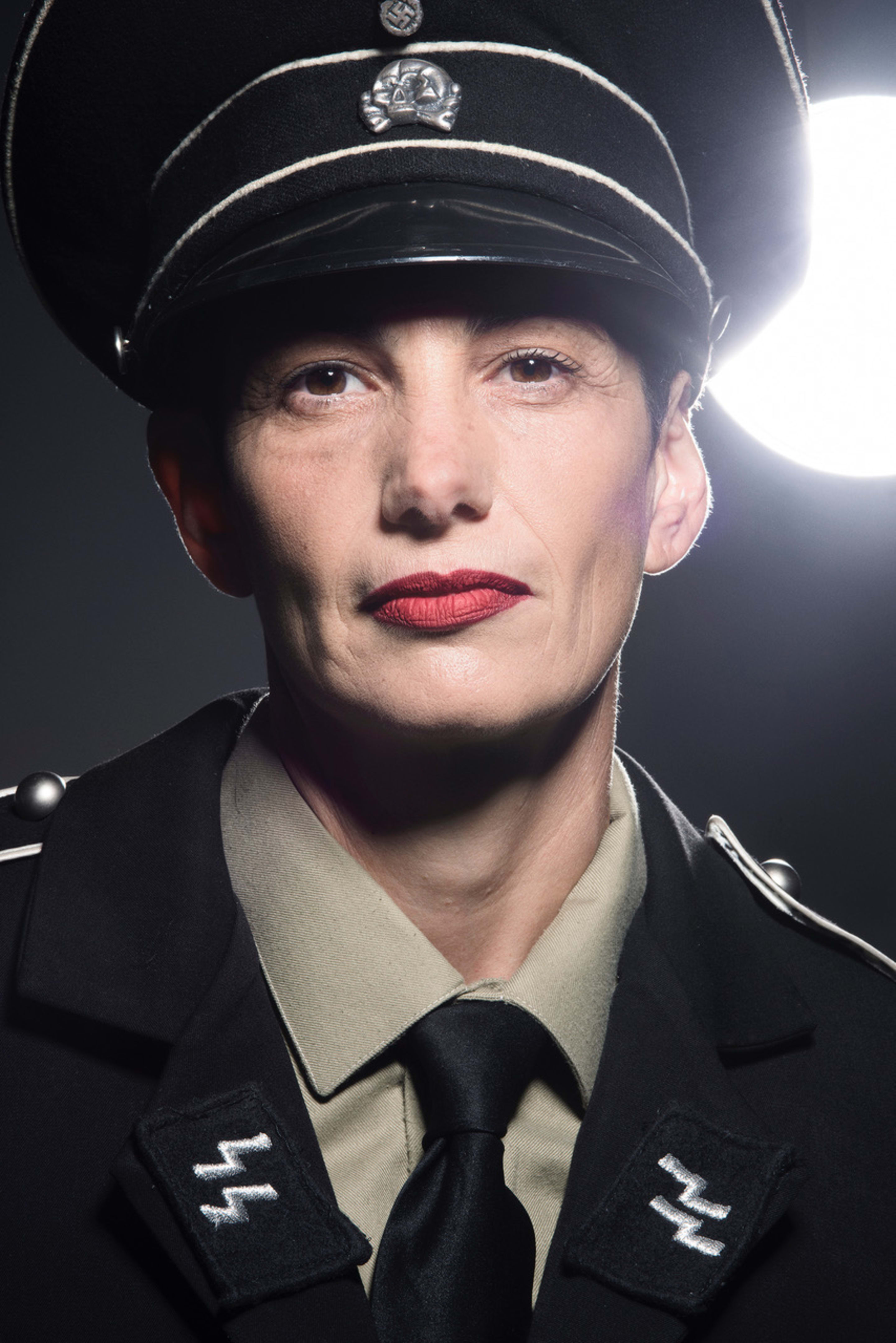
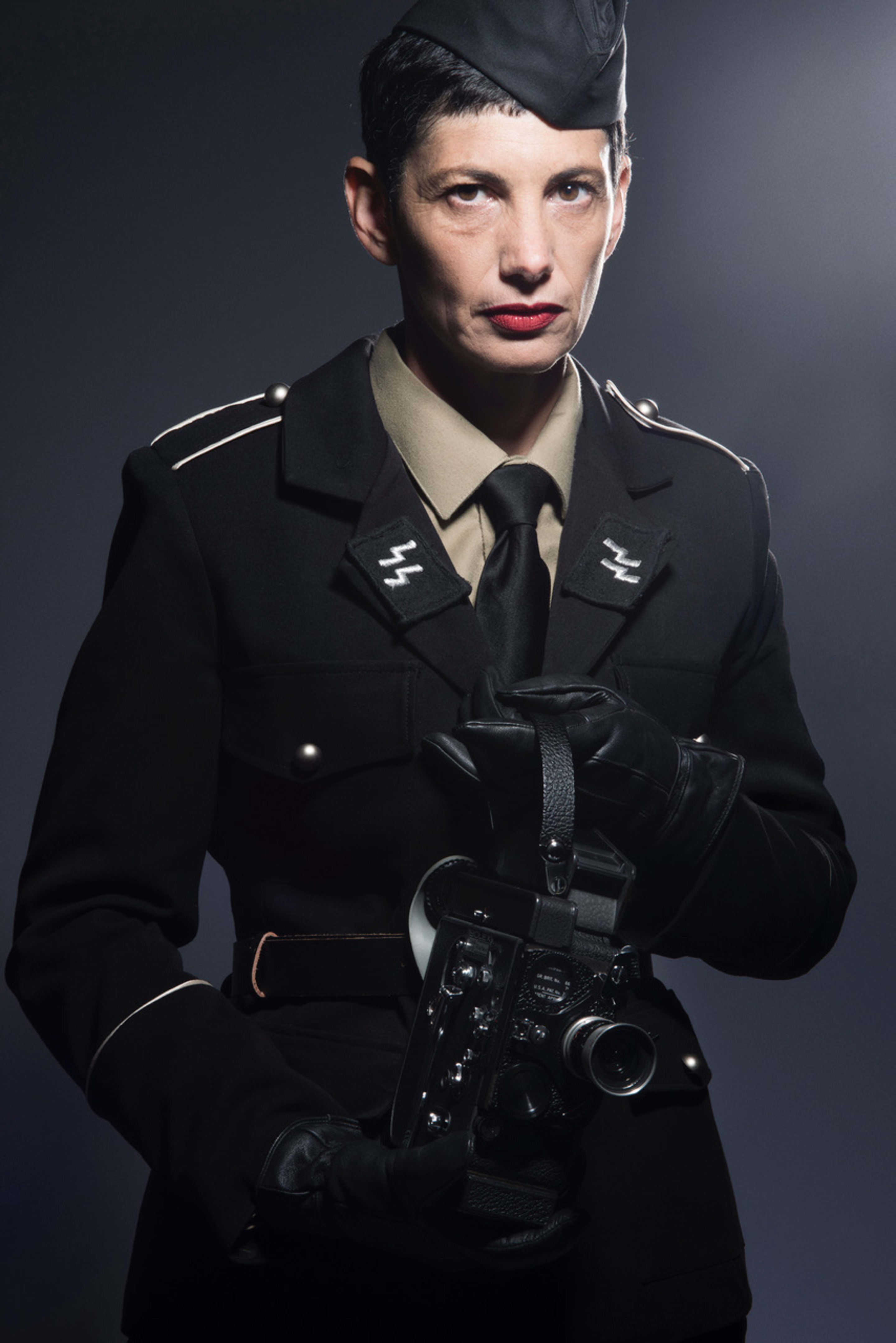
Color photograph, fine art print
60 × 40 cm
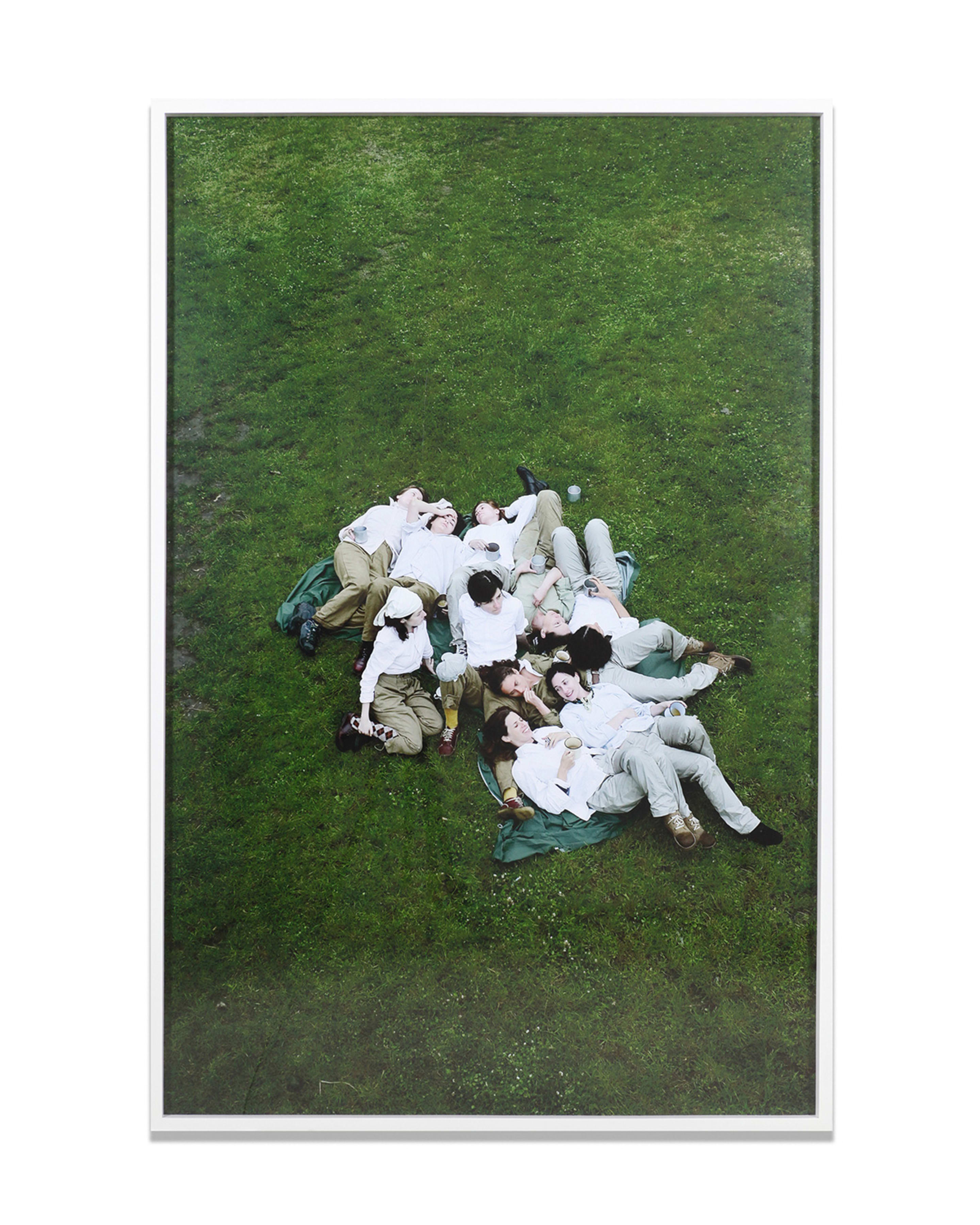
Colour photograph on dibond
120 × 80 cm; 121,7 × 81,7 × 4,6 cm framed
Bartana's solo exhibition Redemption Now is on view at the Jewish Museum Berlin through November 21, 2021. Works by Yael Bartana are also on view in the group exhibitions LIFE / STILL LIFE / LAND at the Museum on the Seam, Jerusalem, through July 31, Der Katalysator. Joseph Beuys und Demokratie heute at the Museum Morsbroich, Leverkusen, through August 29, and Diversity United at Tempelhof Airport, Berlin, through September 19.
